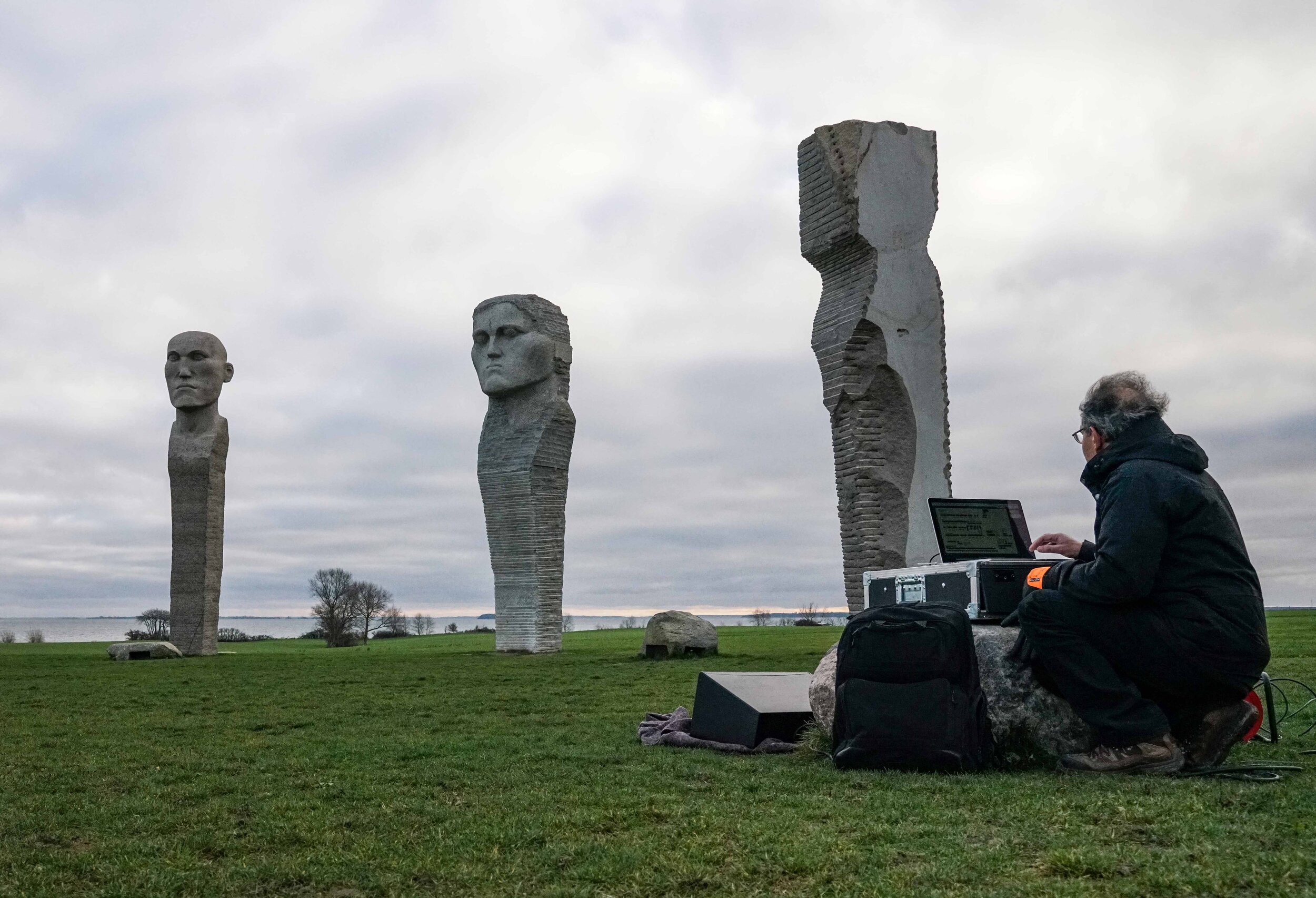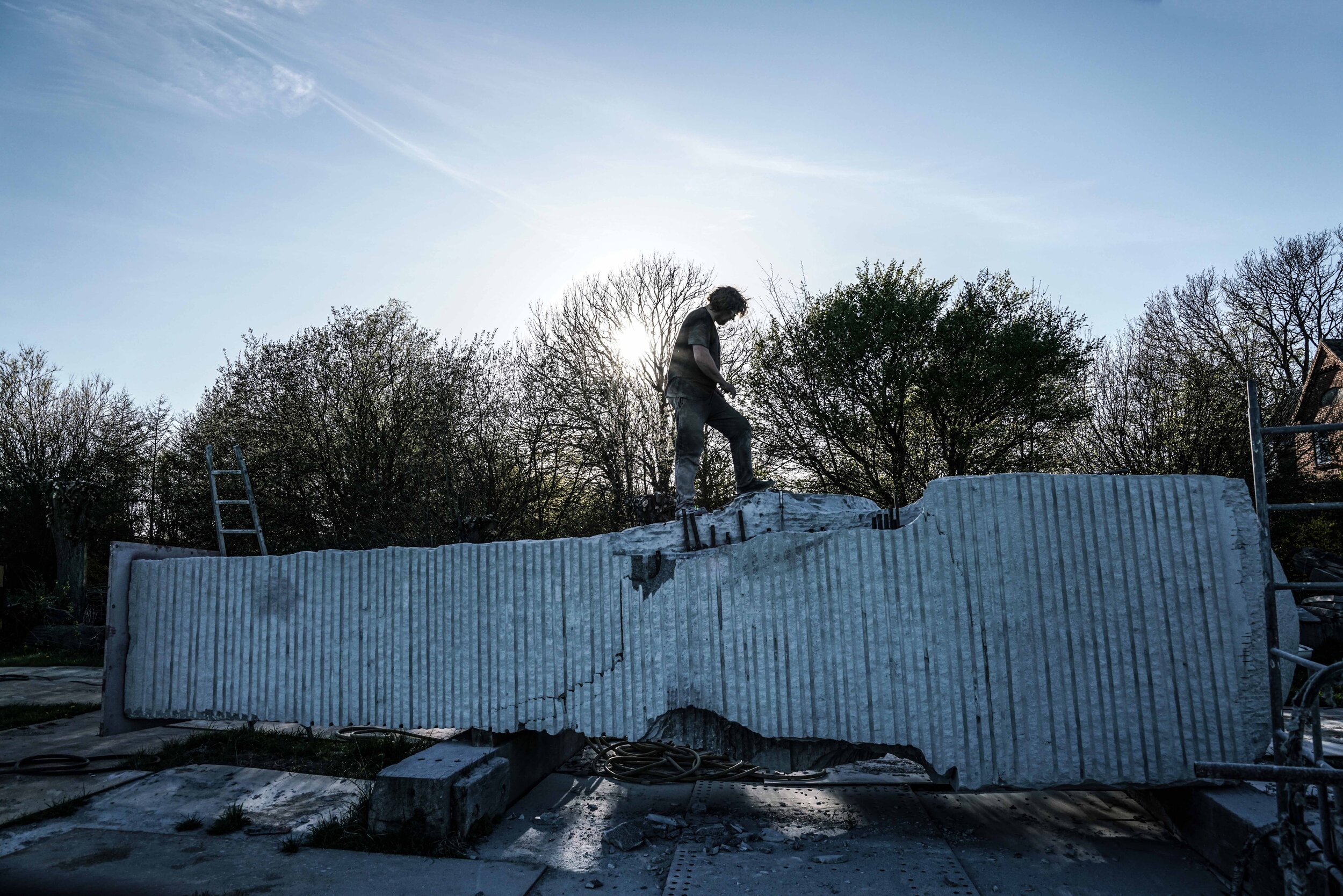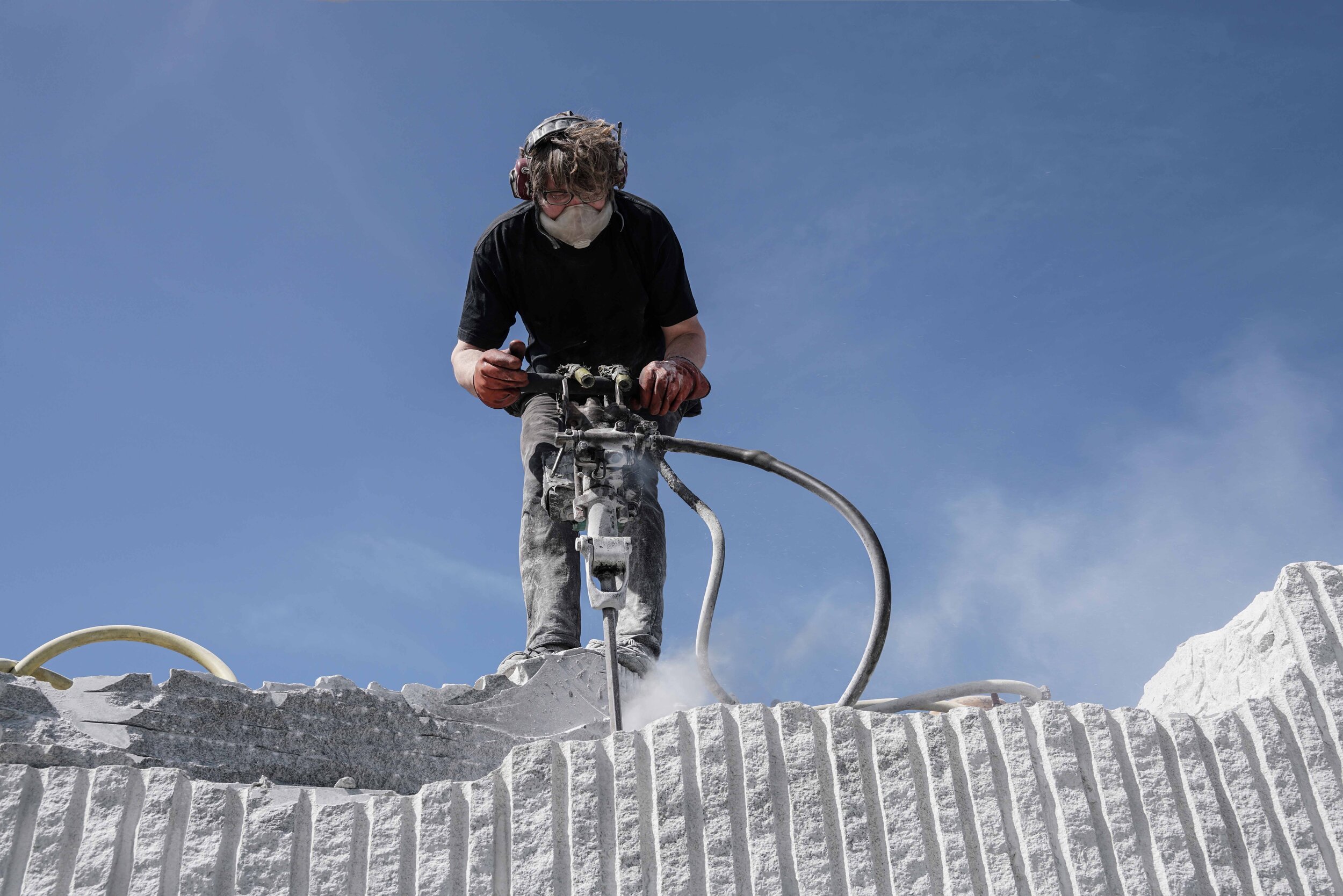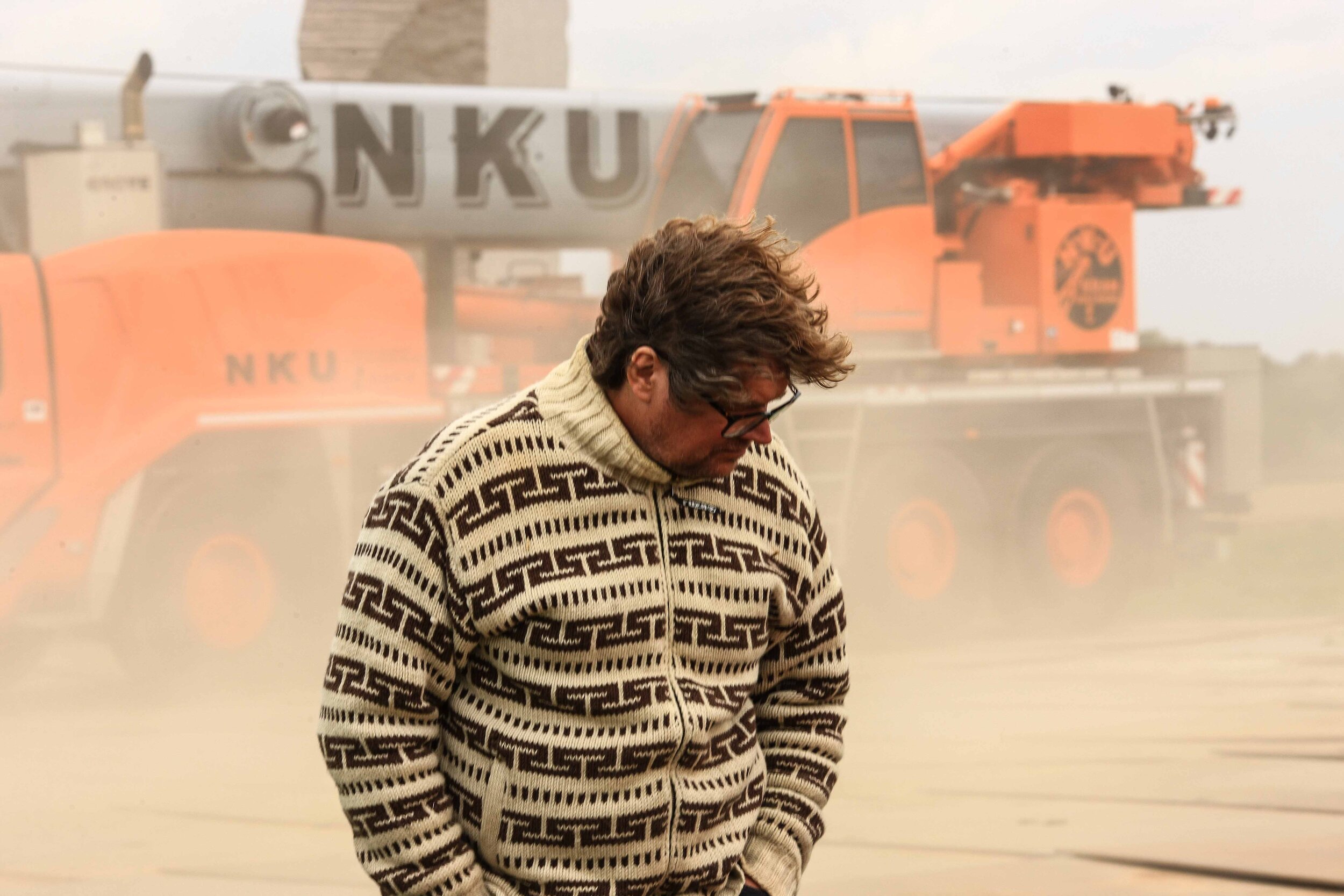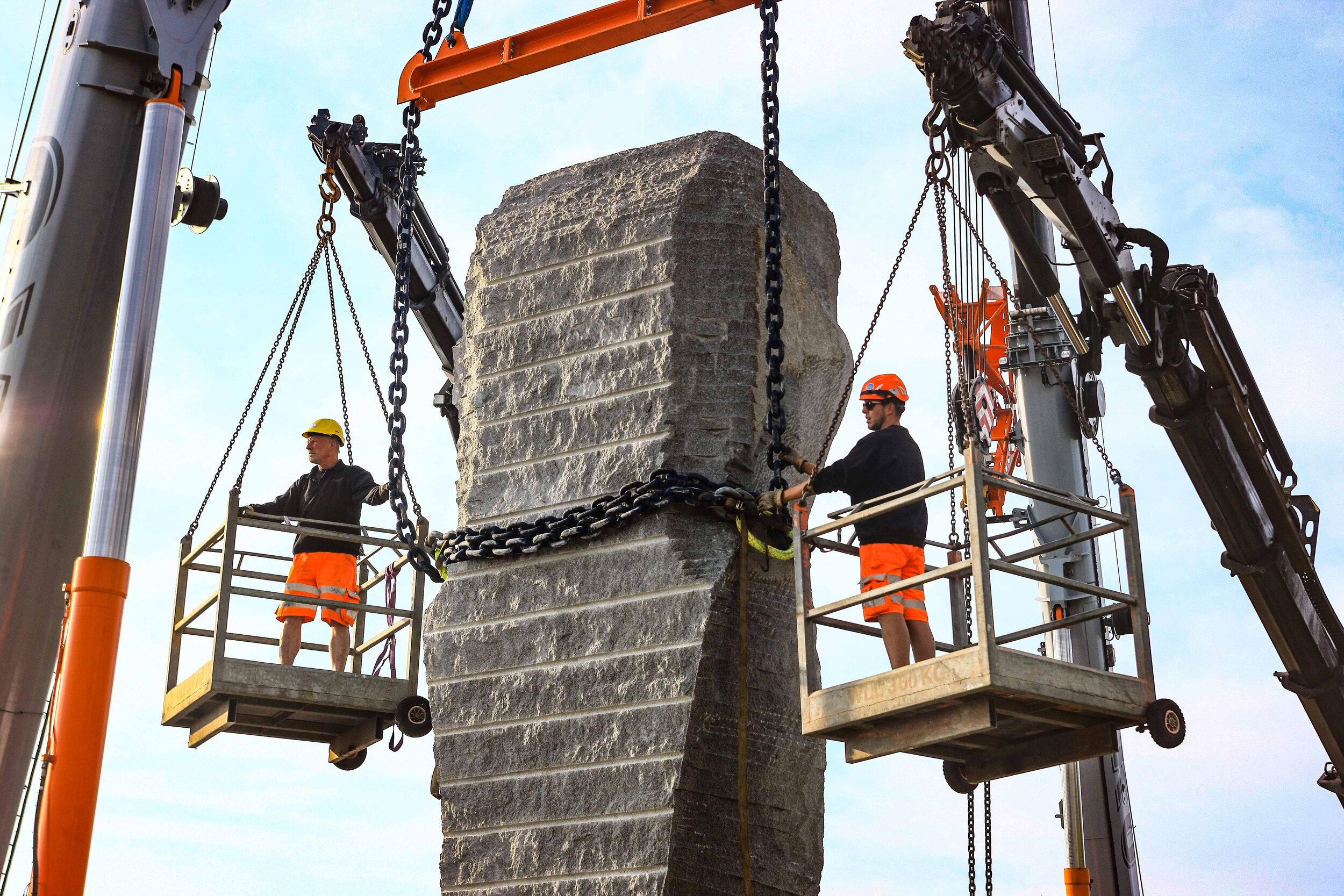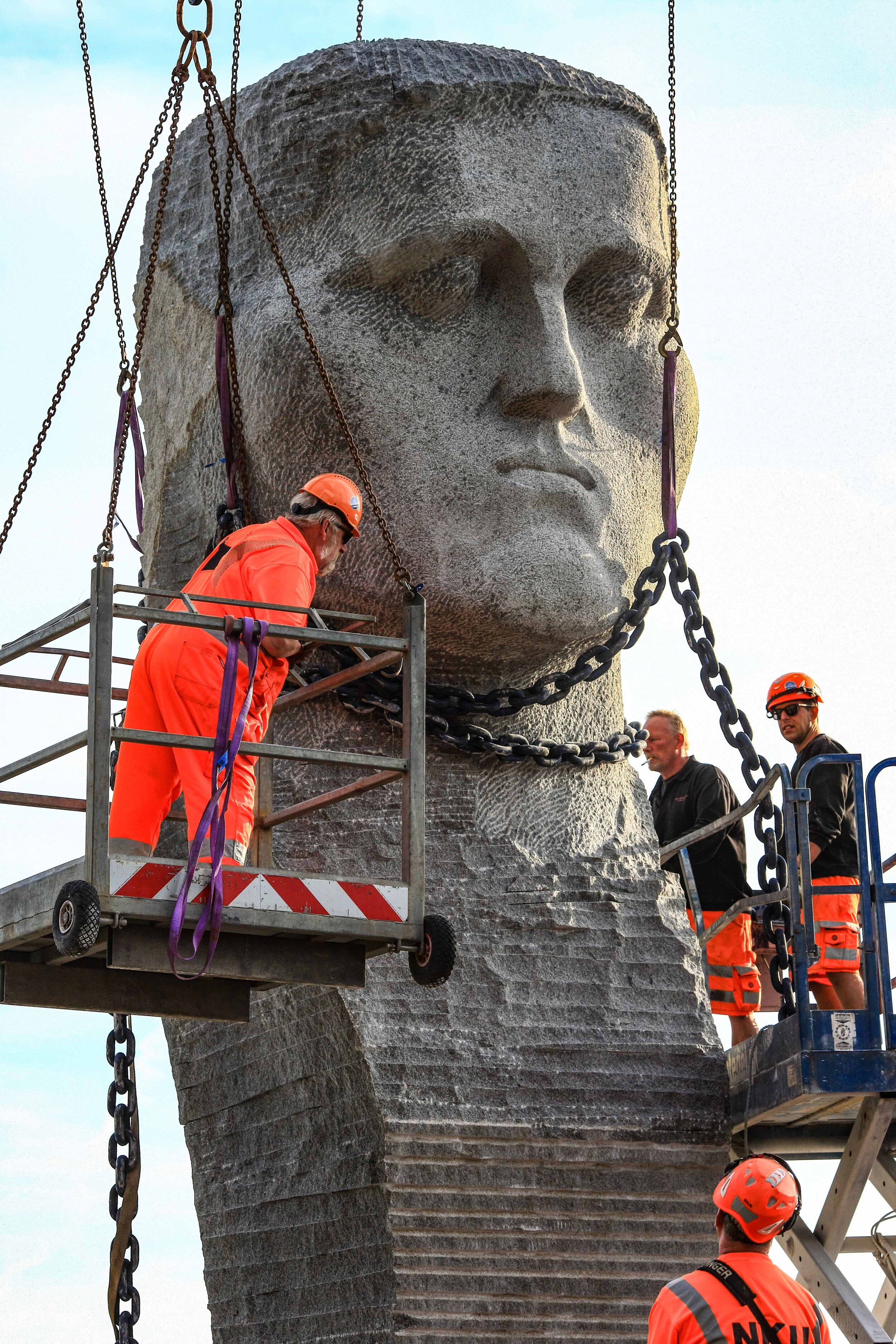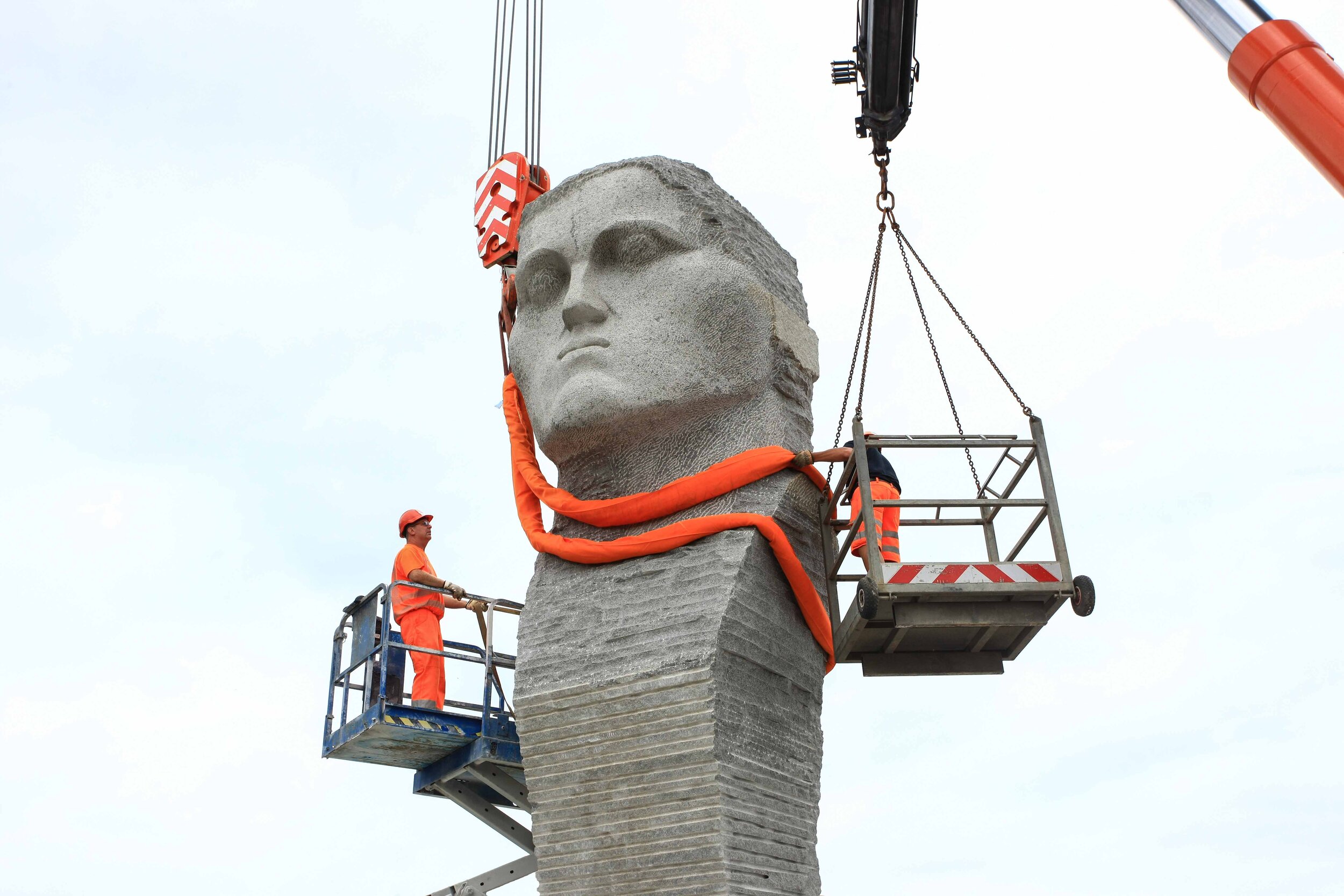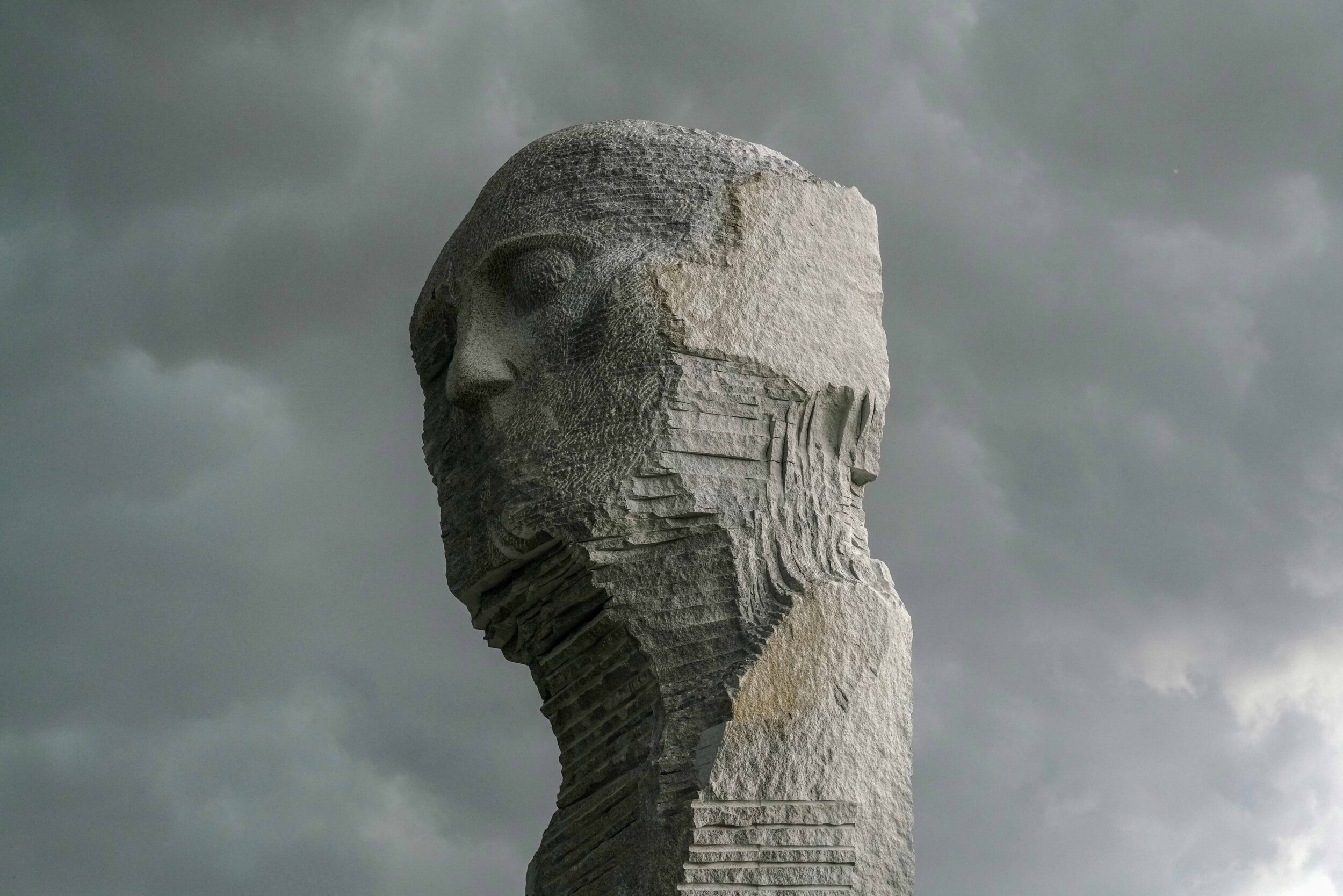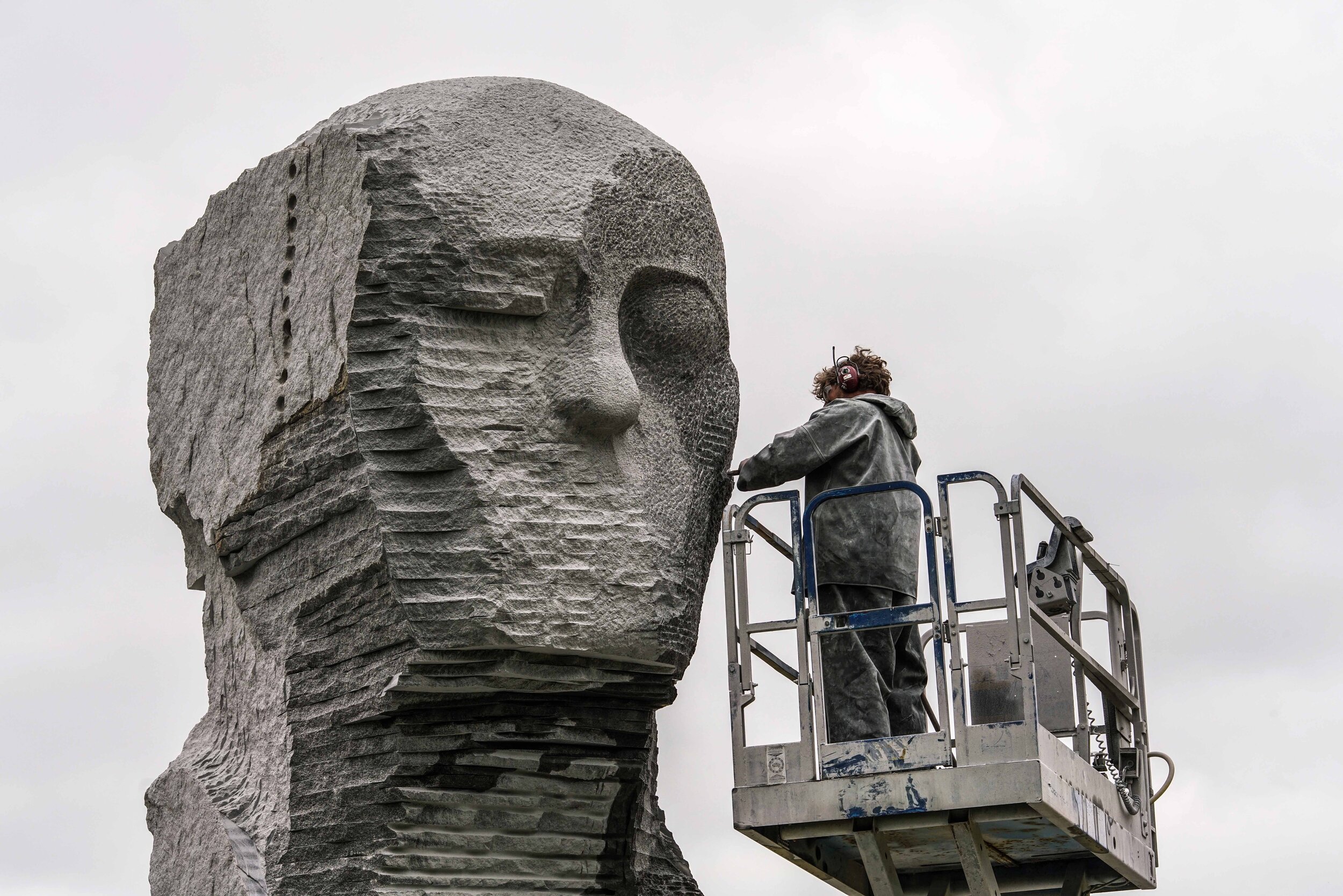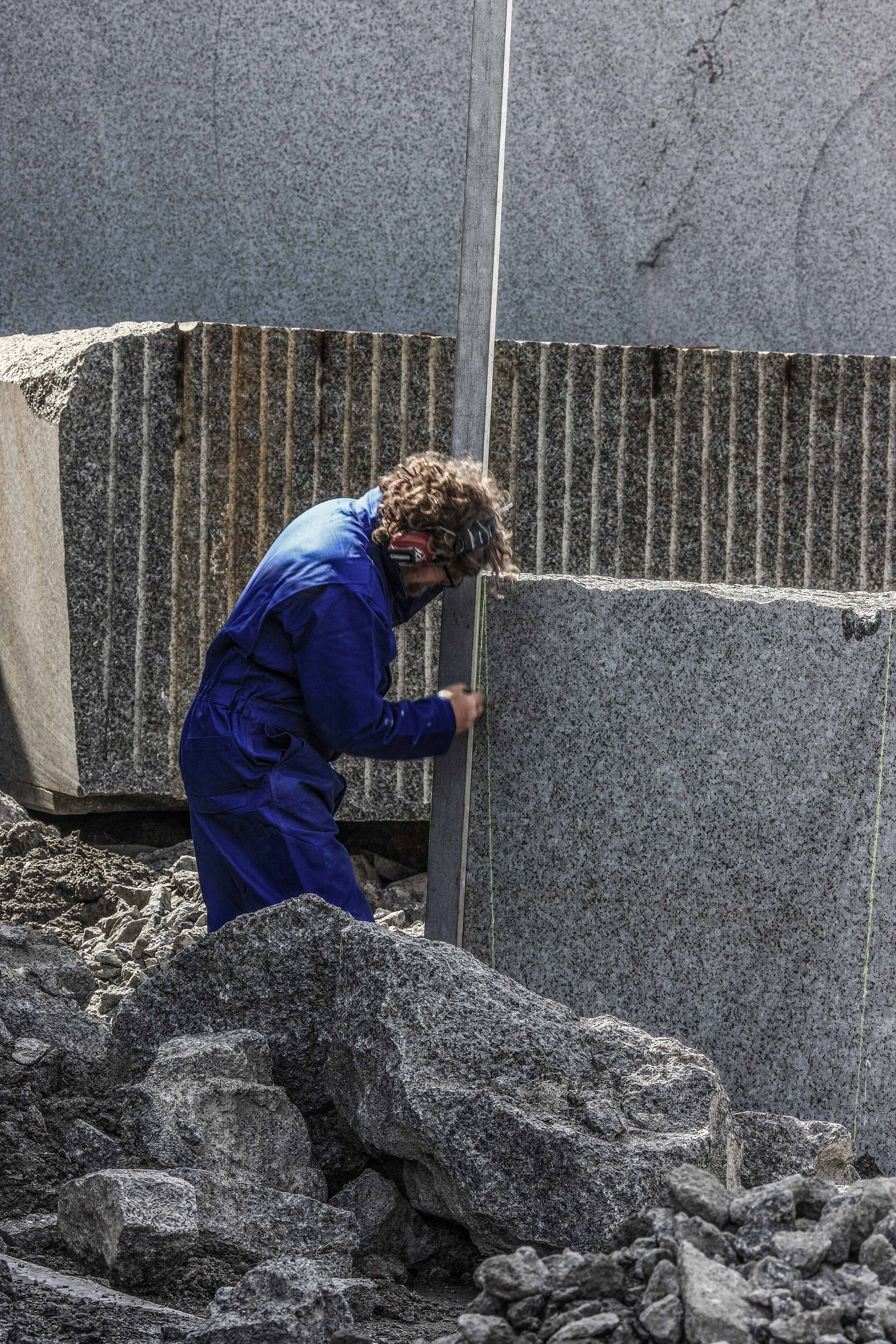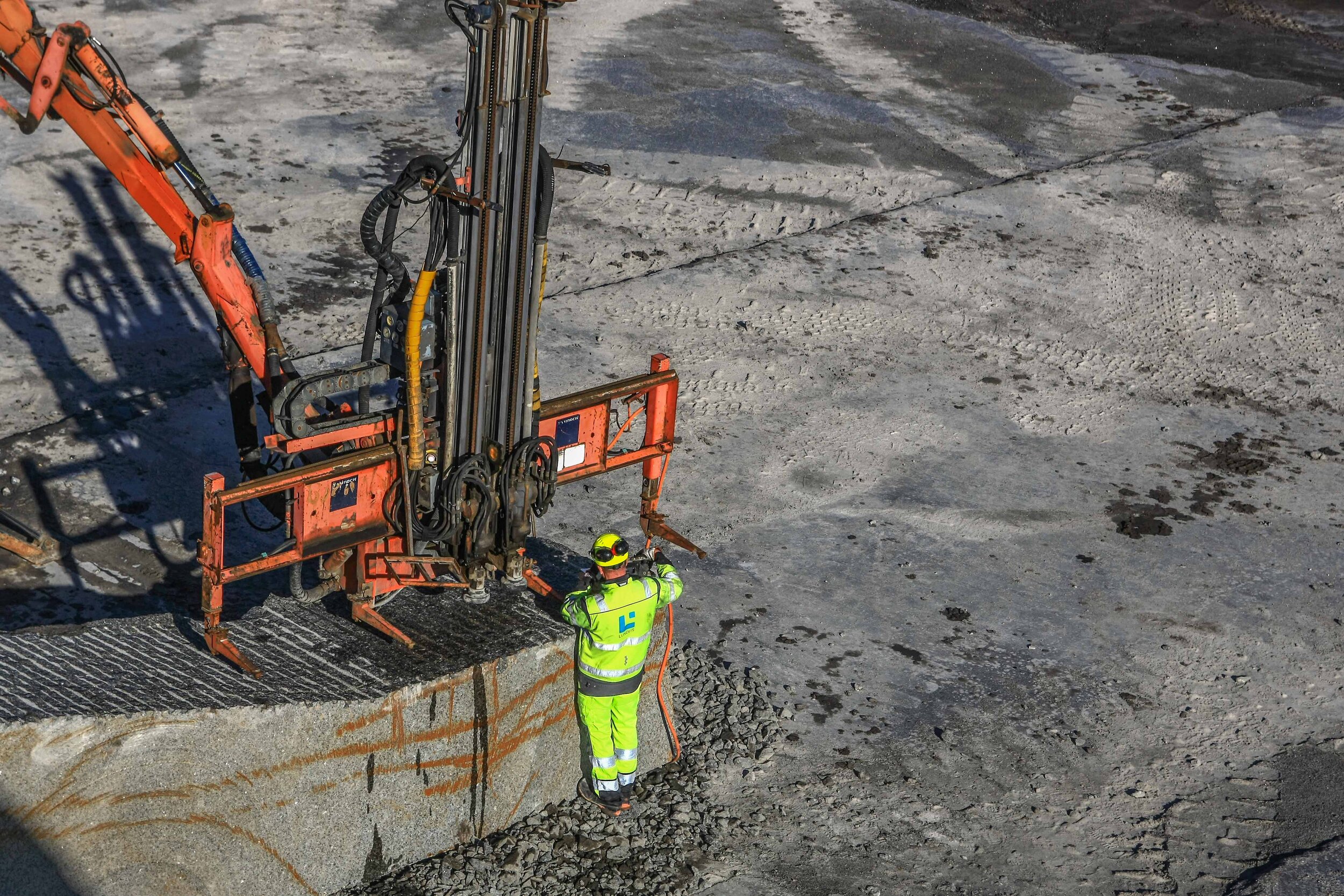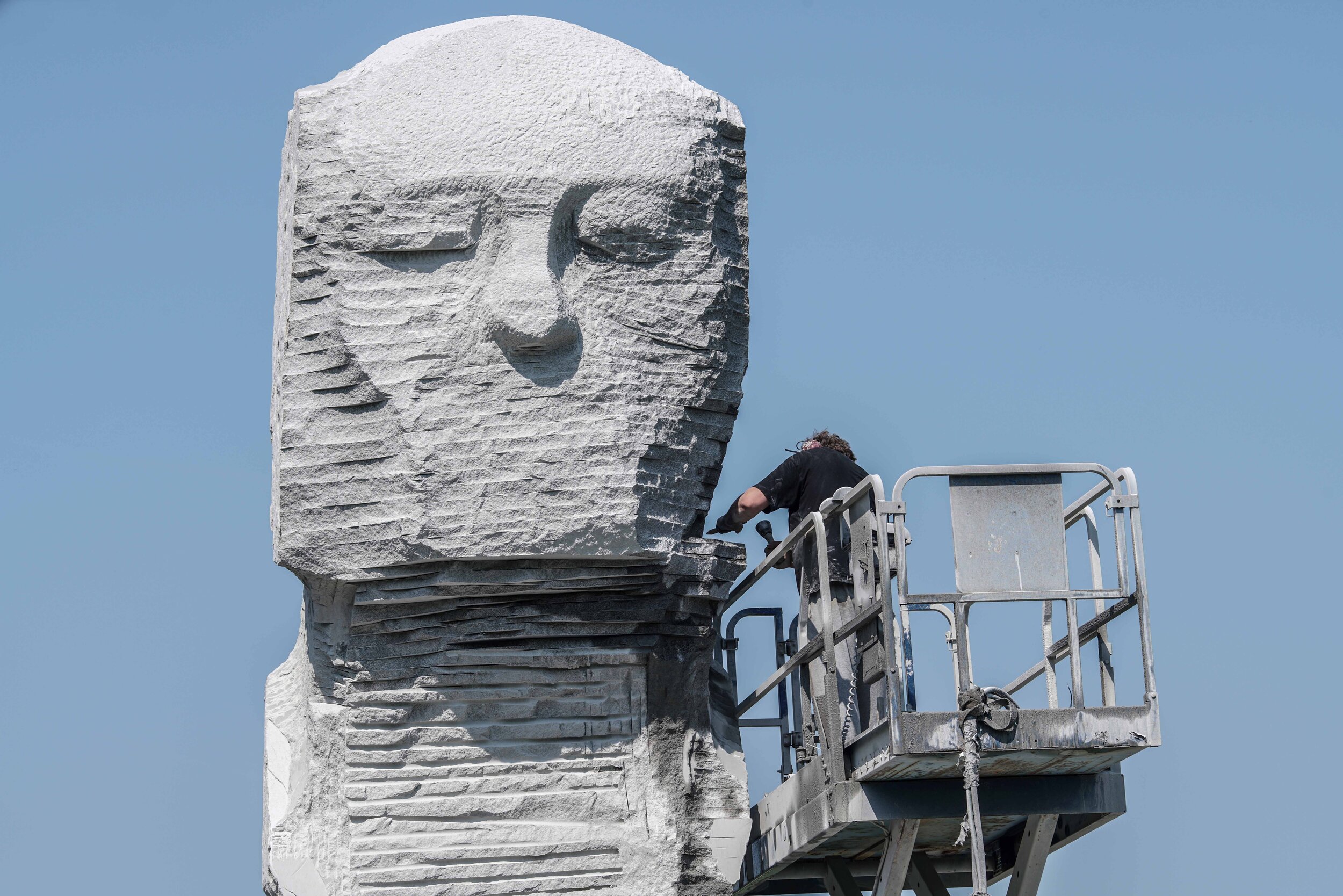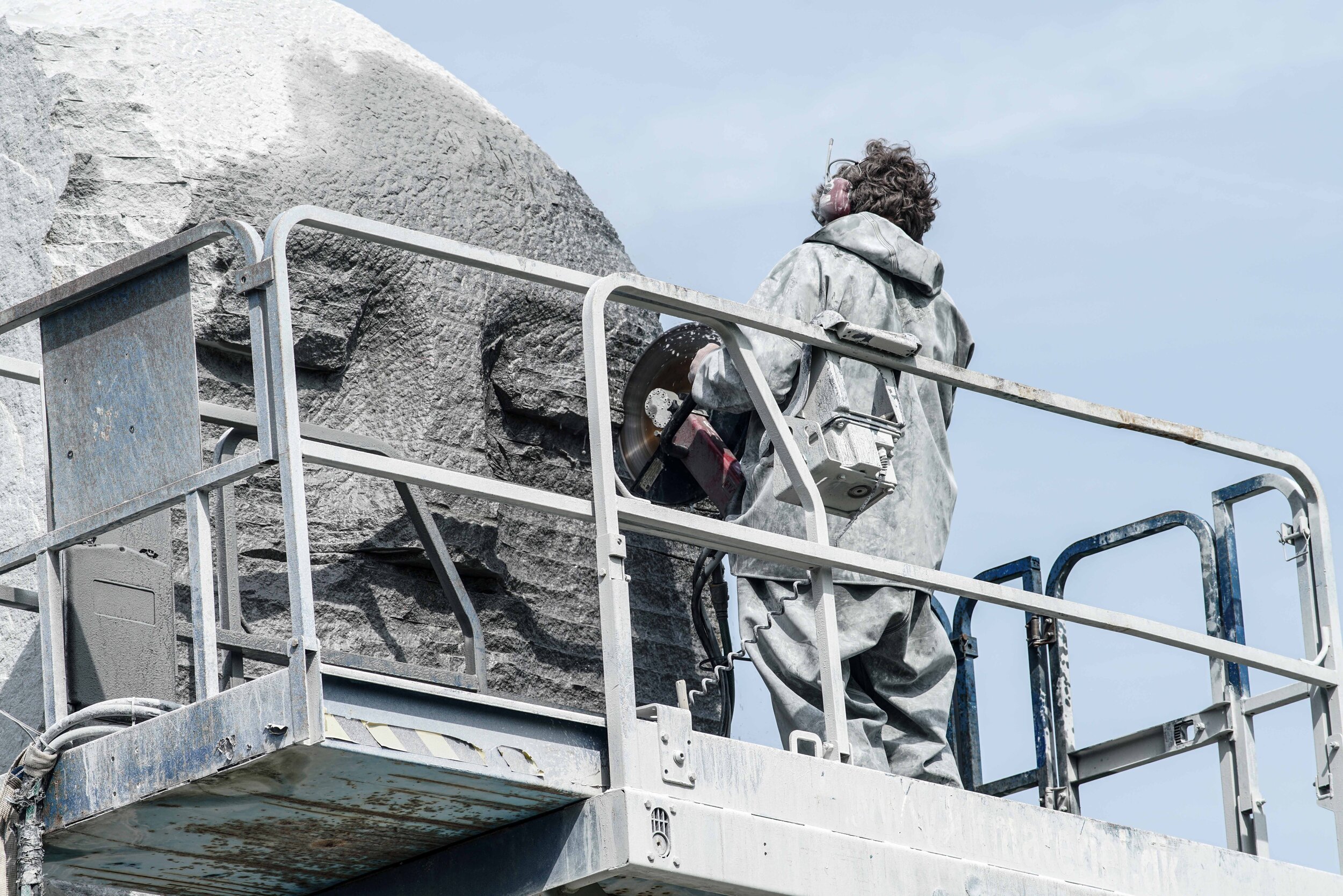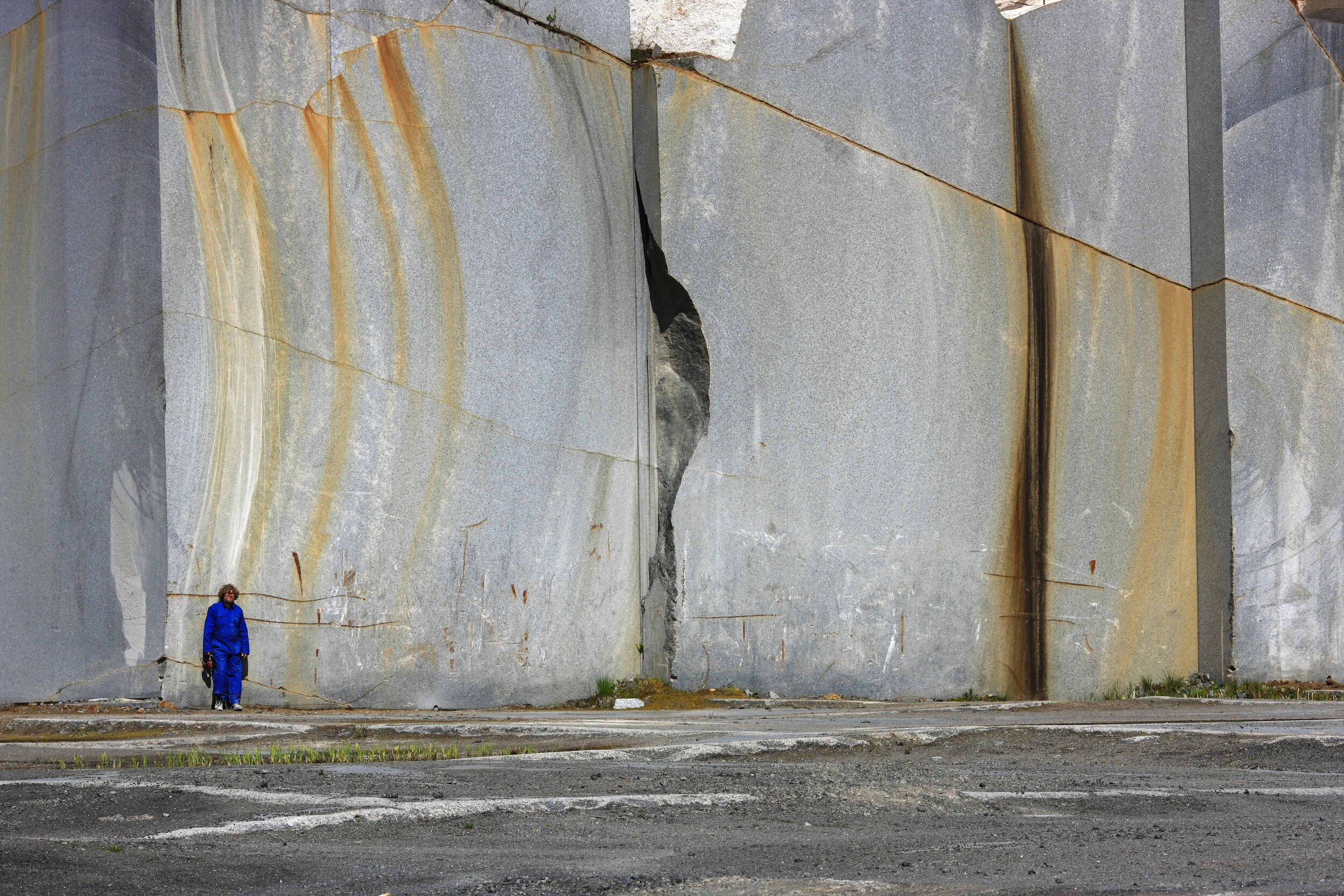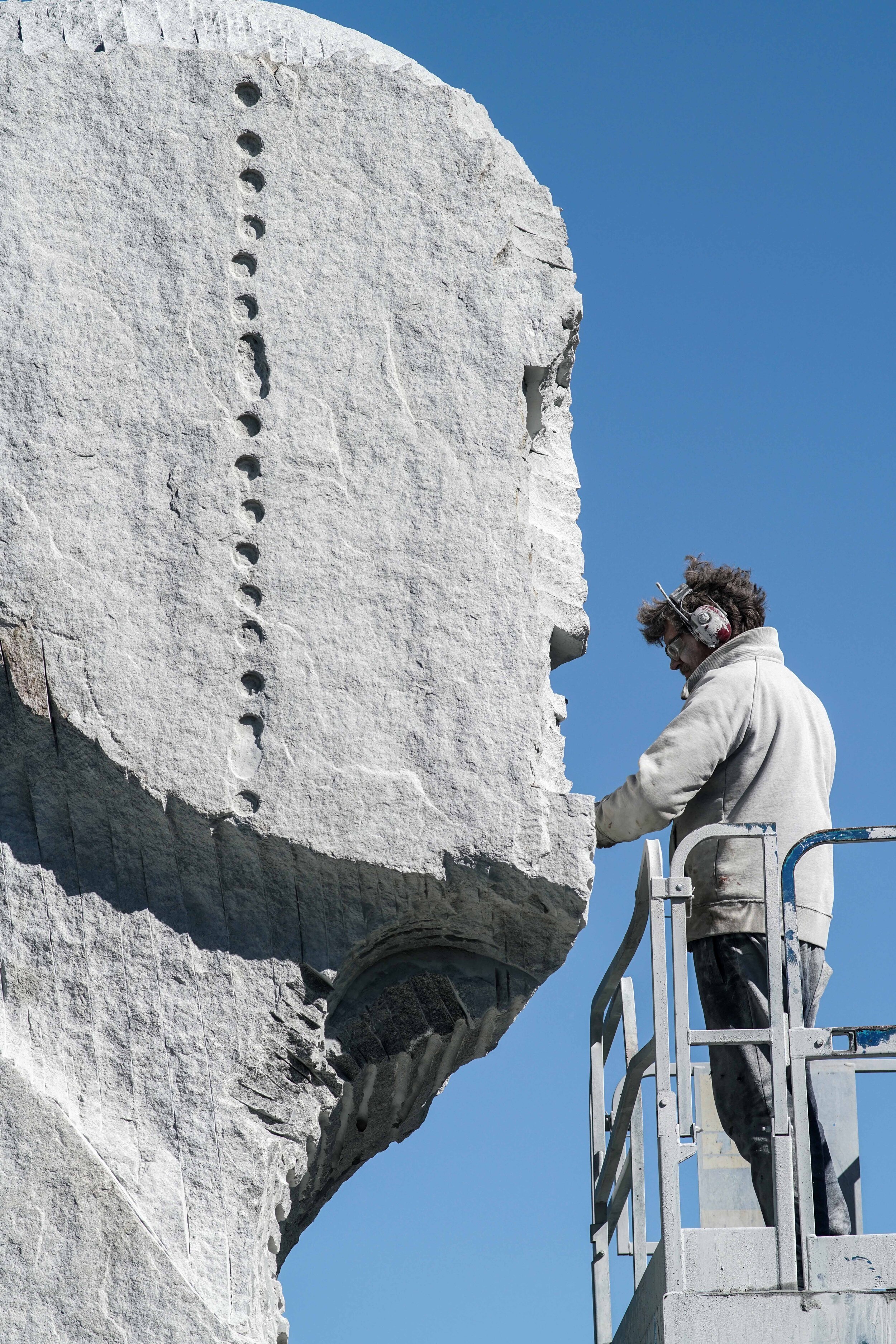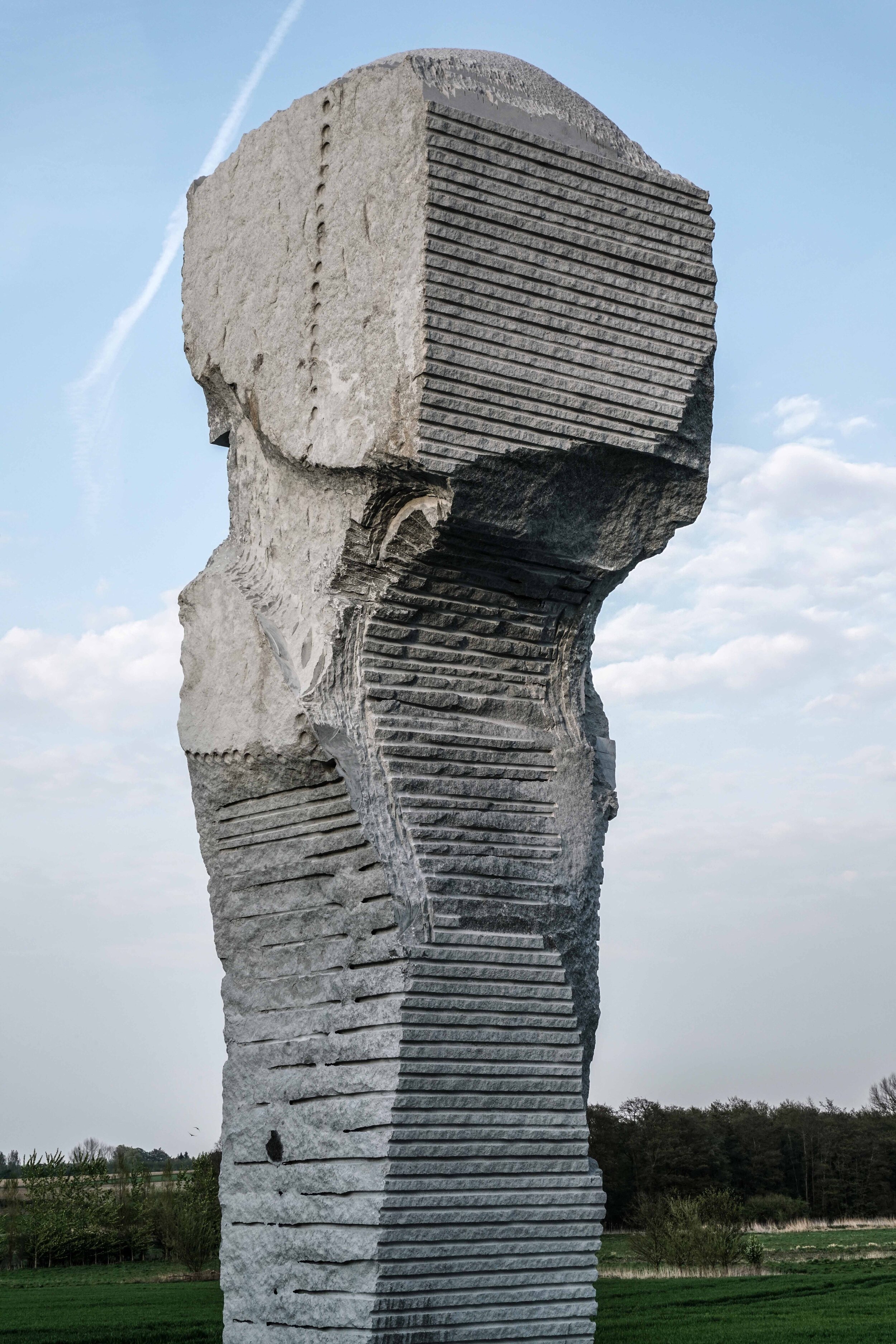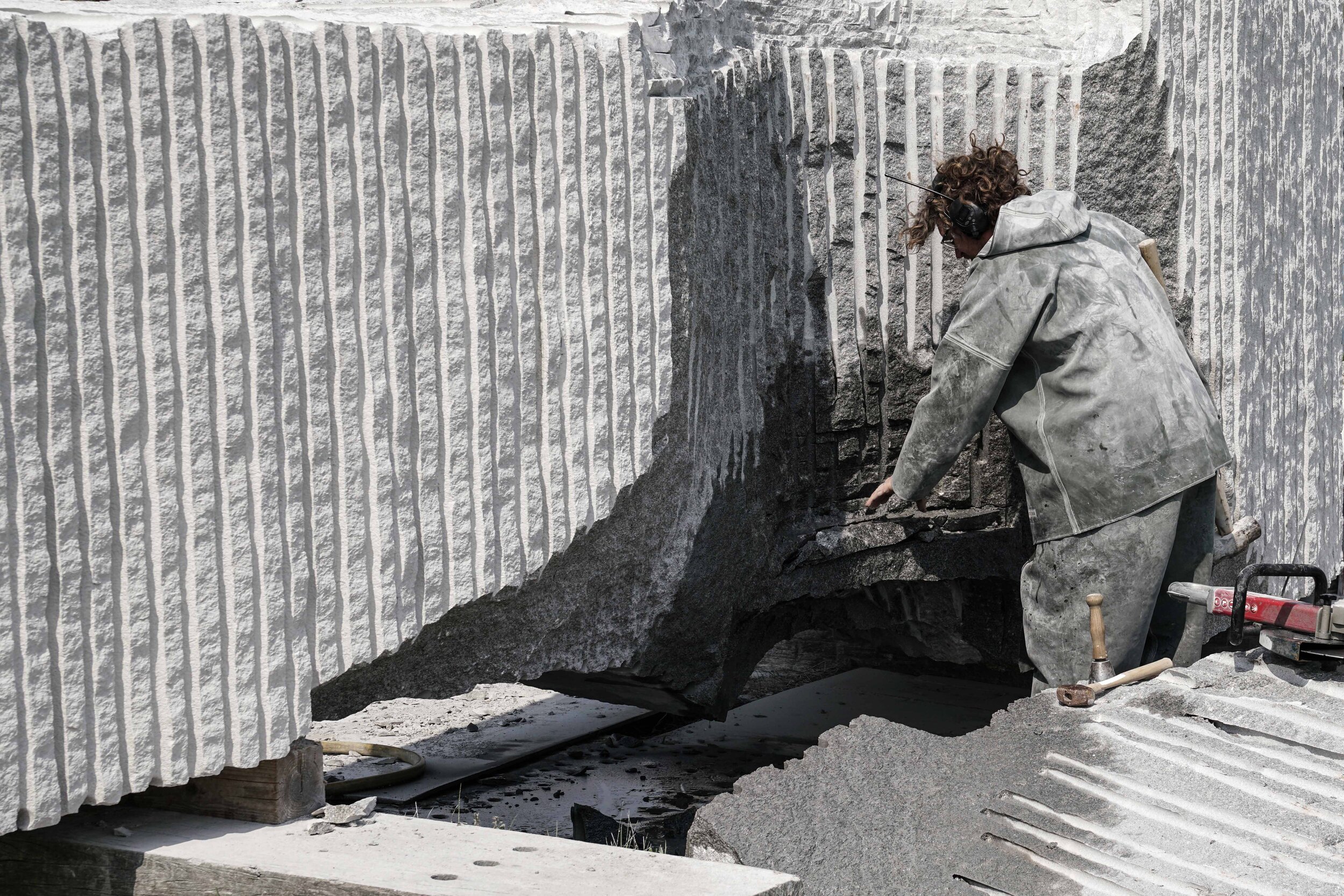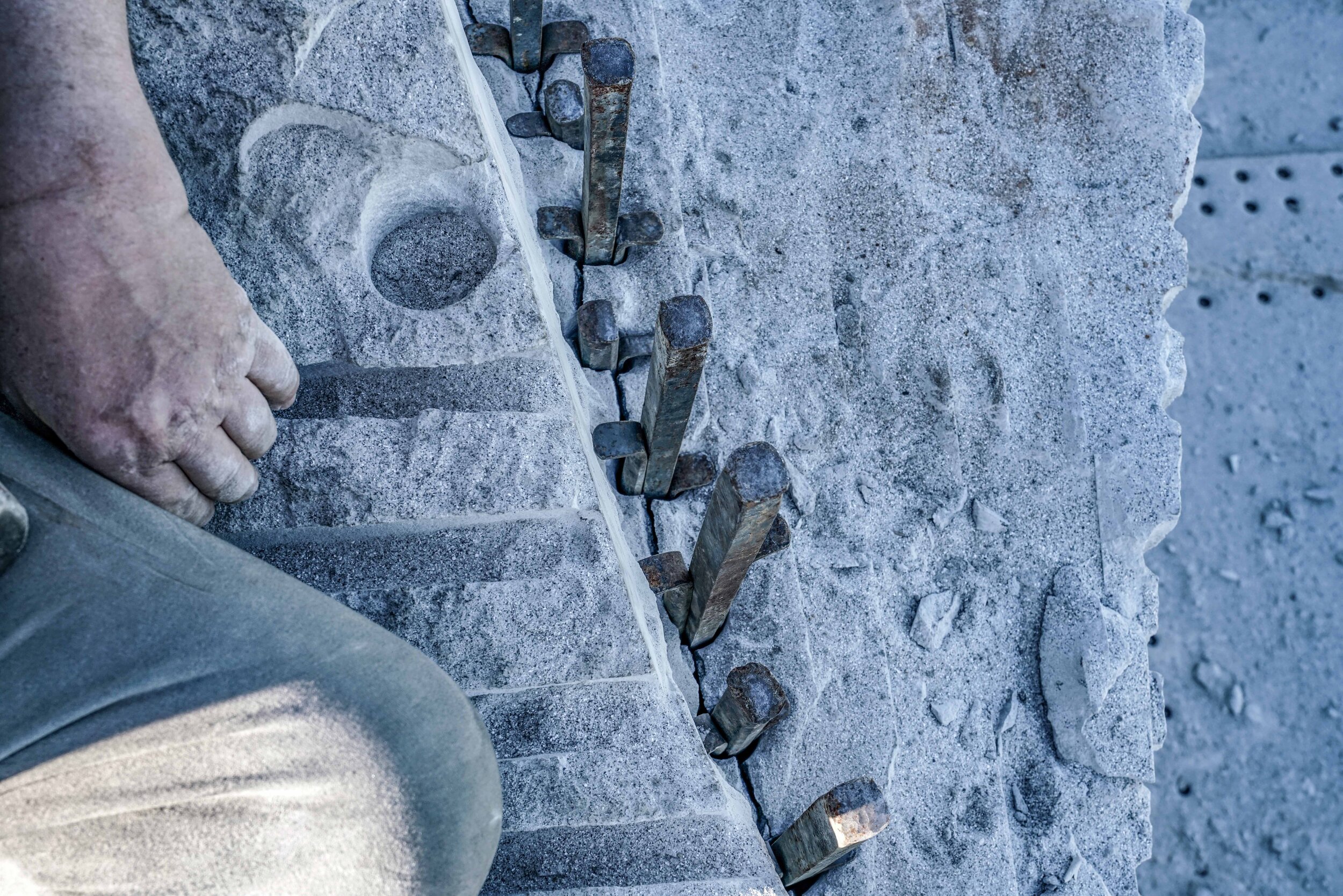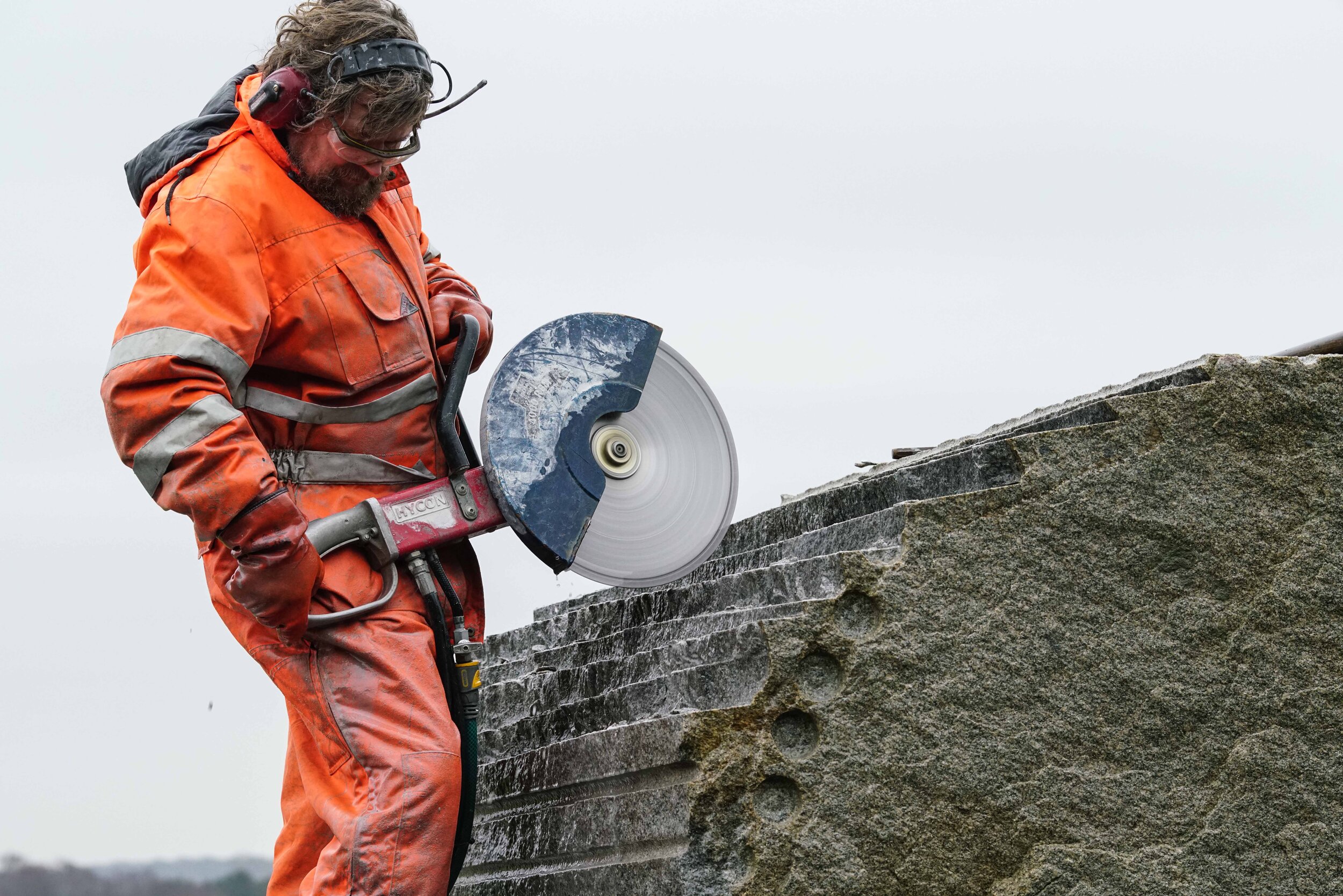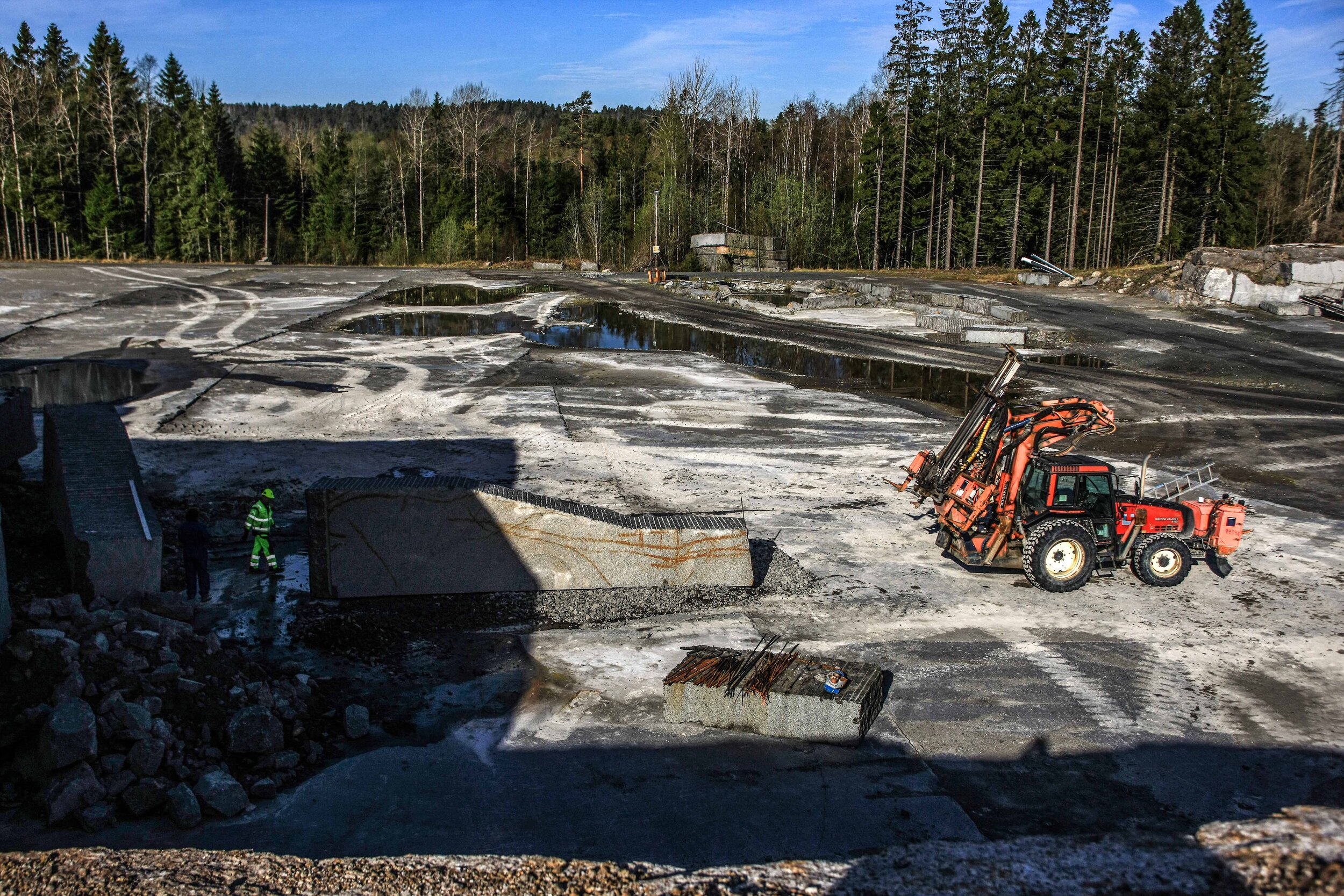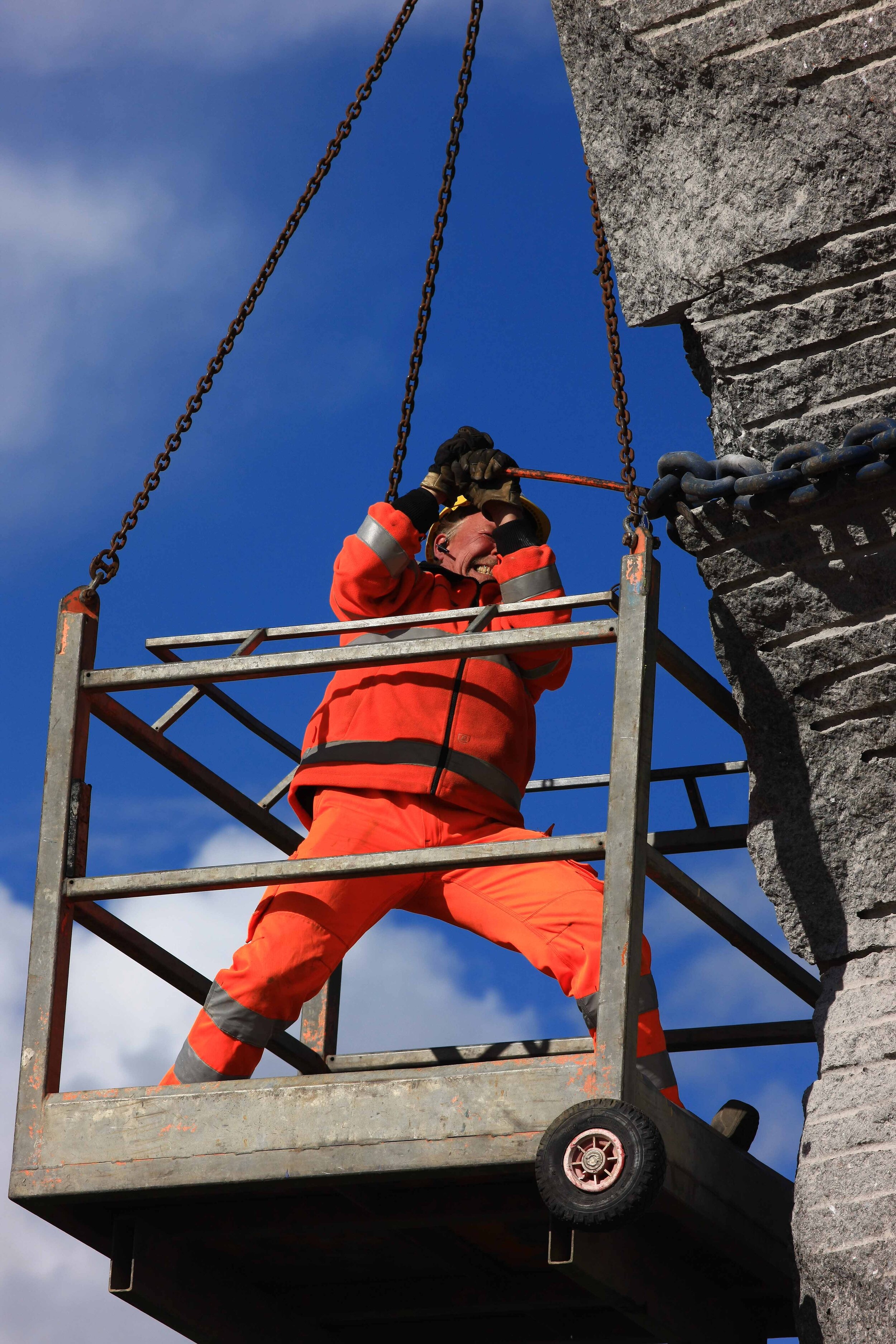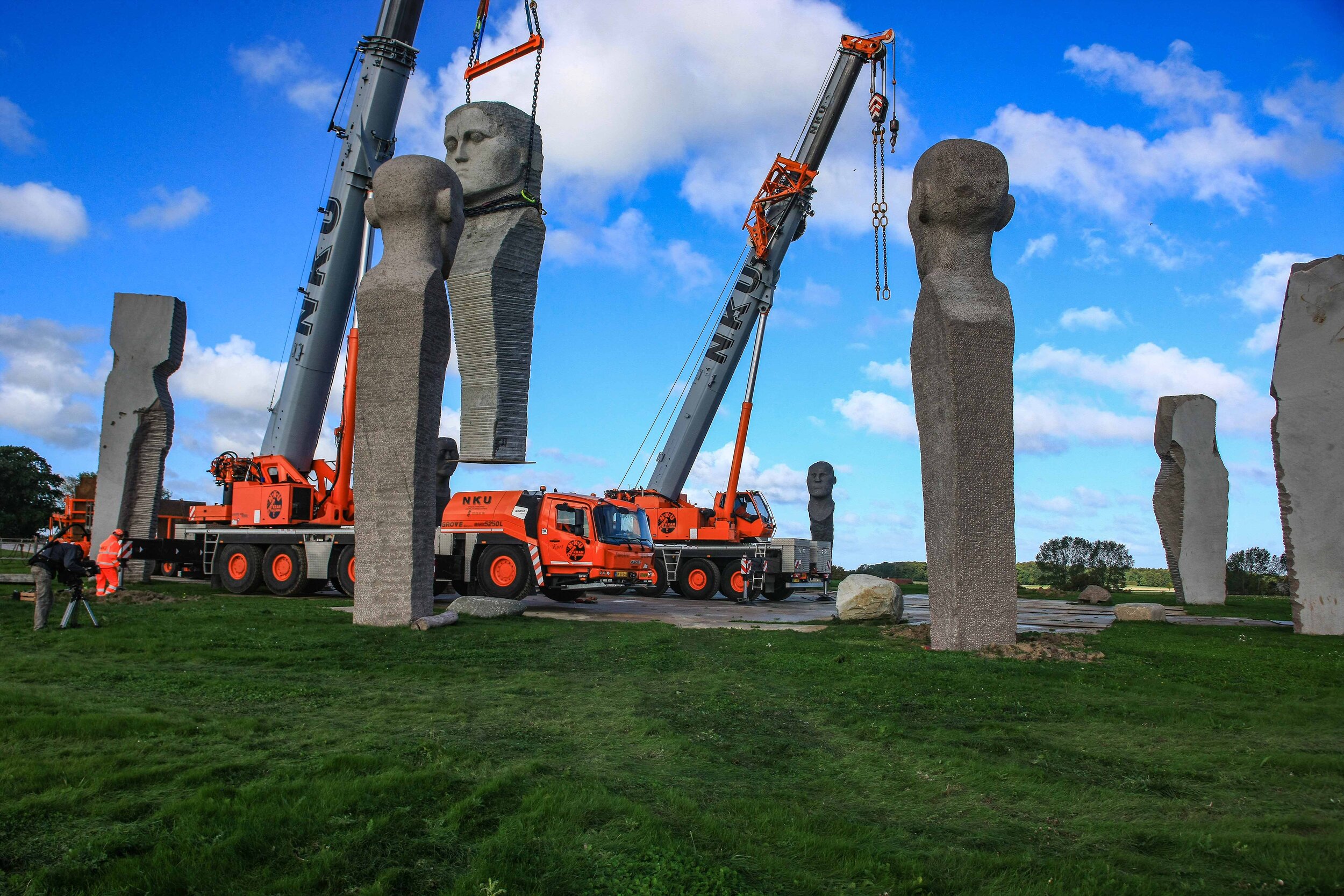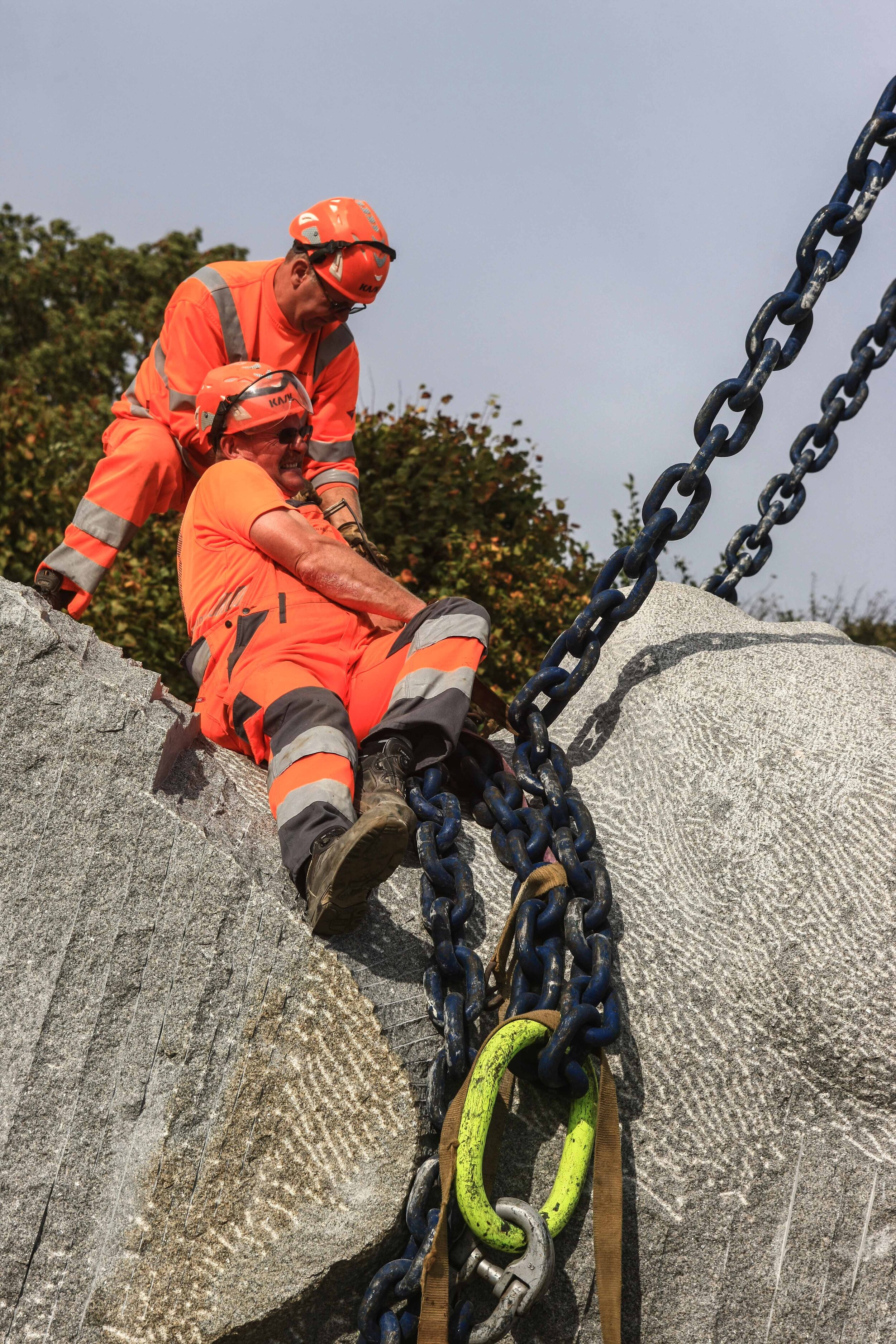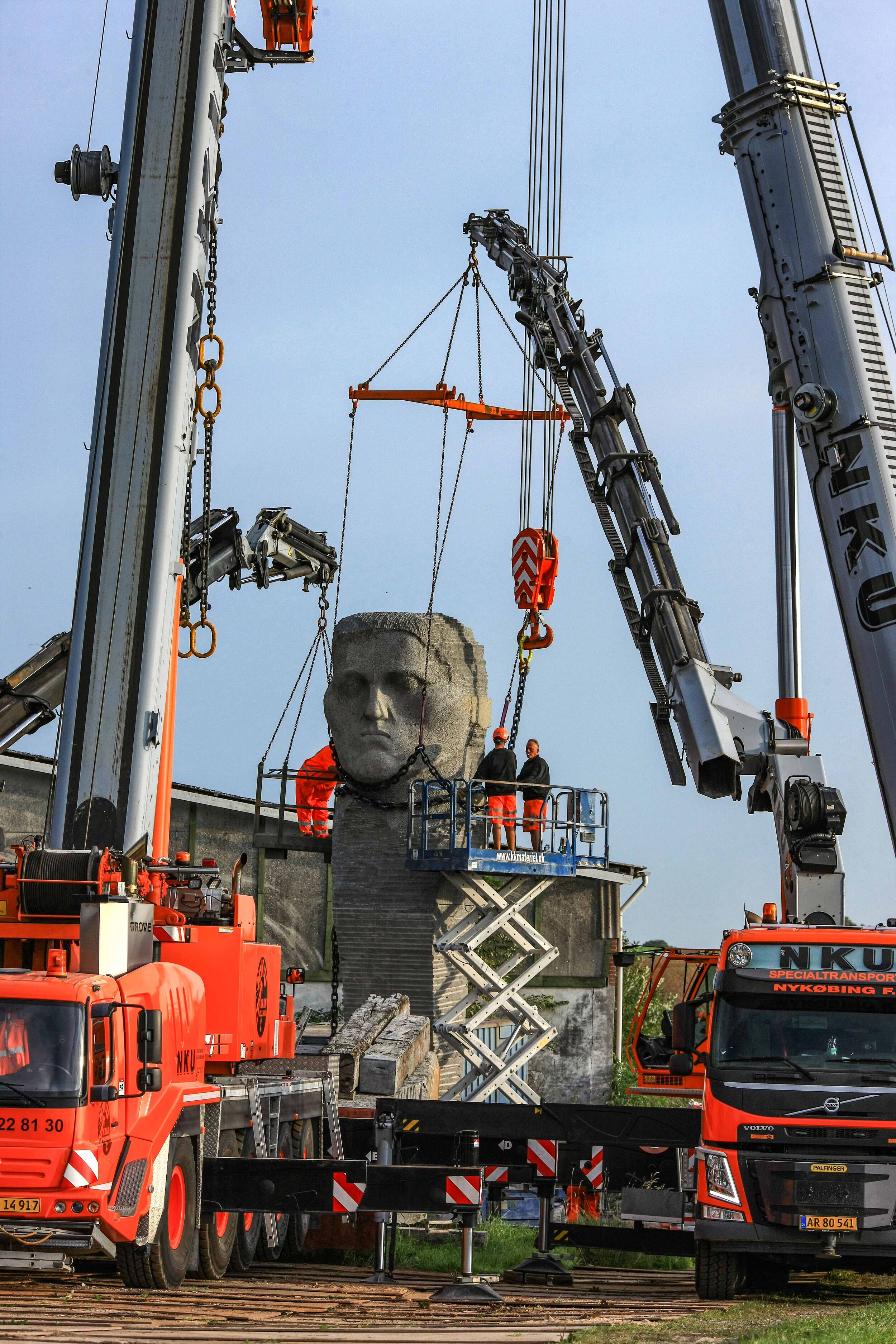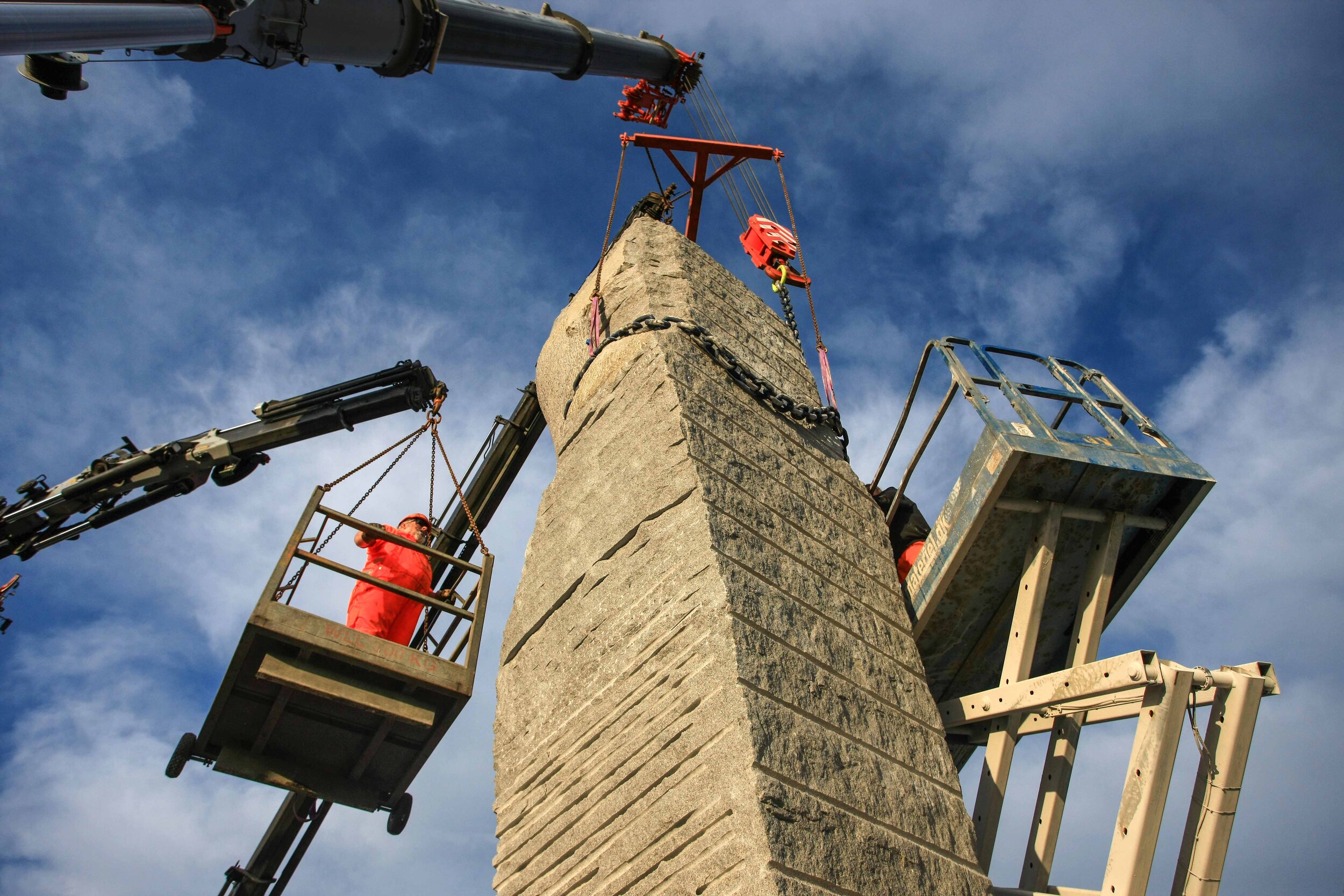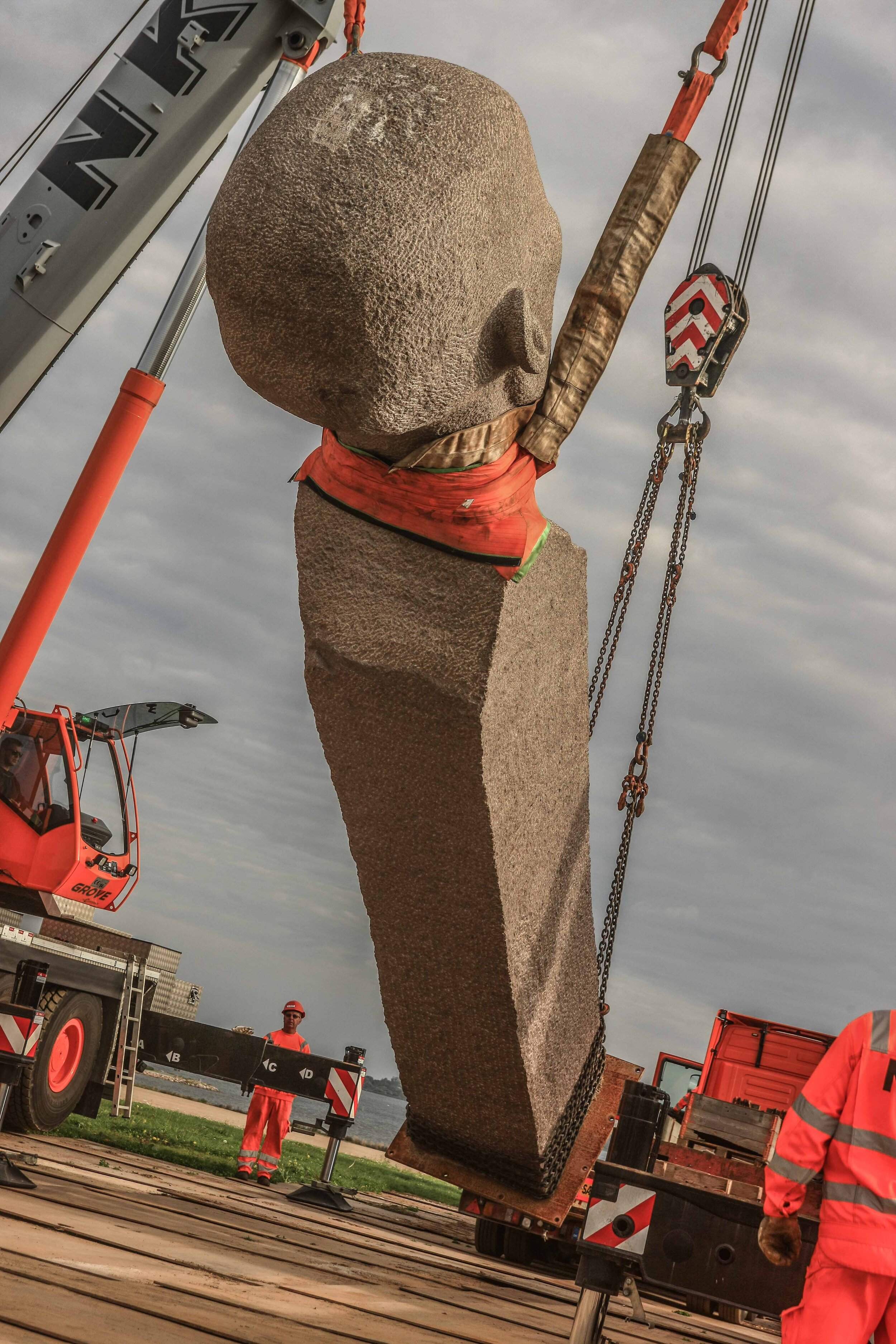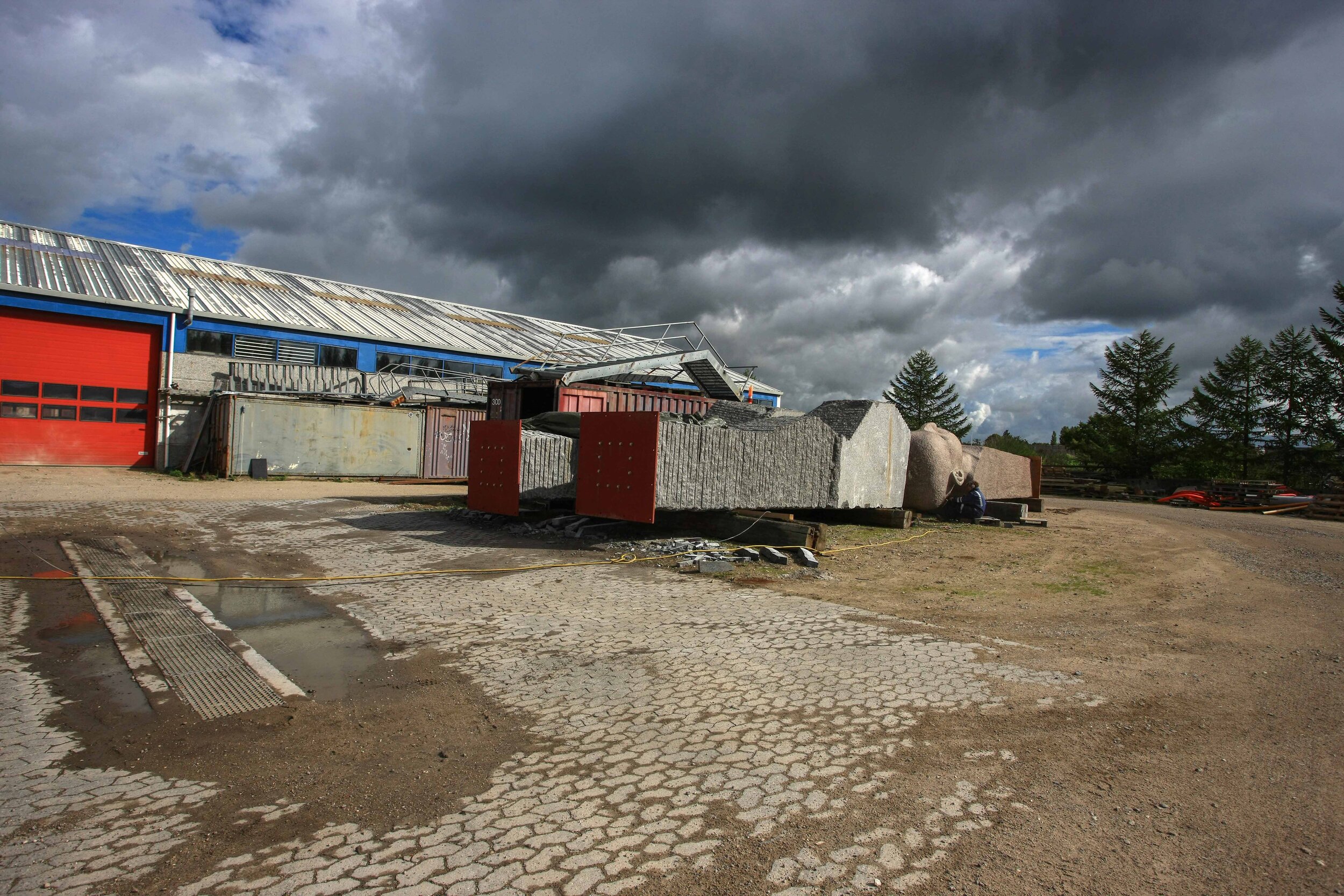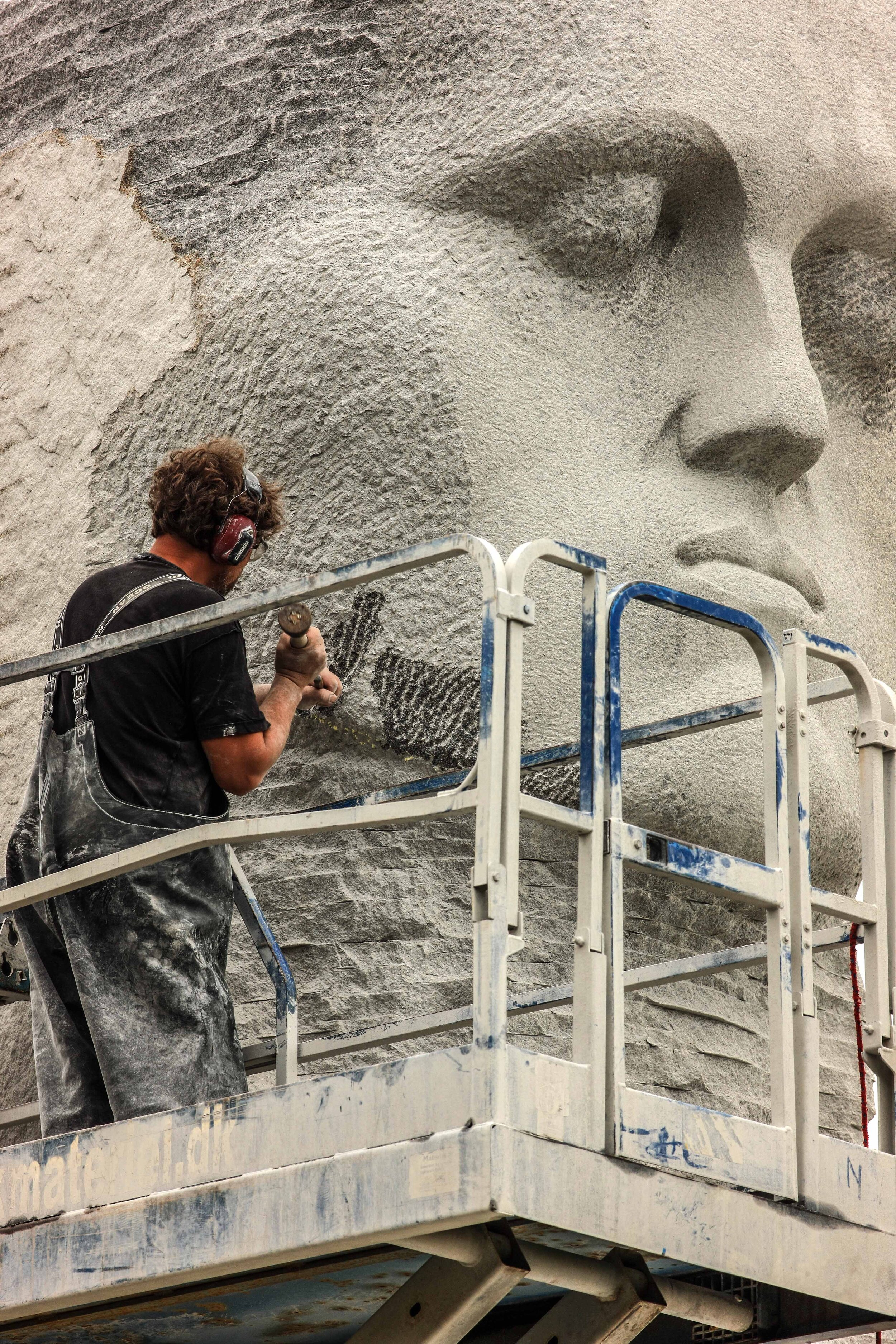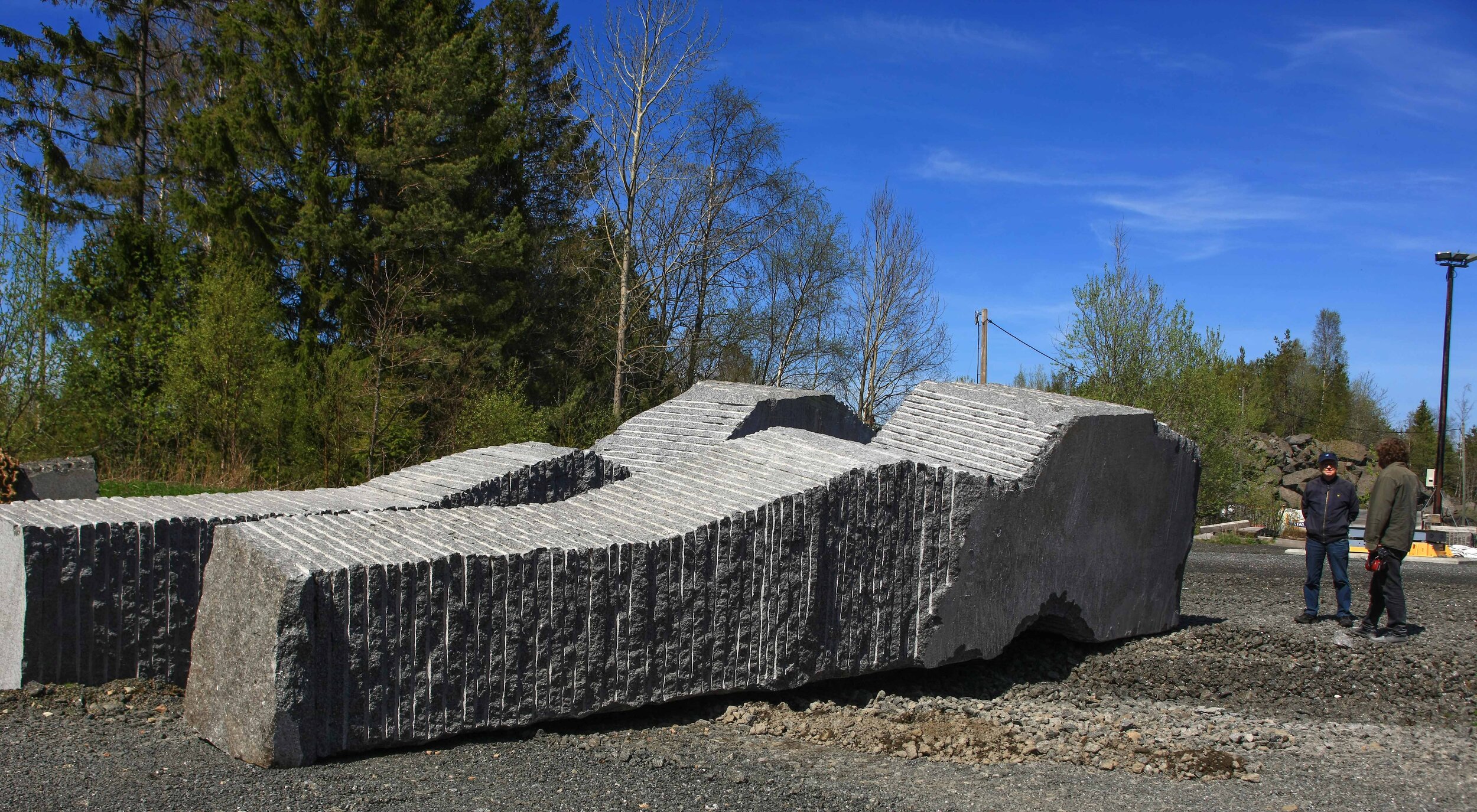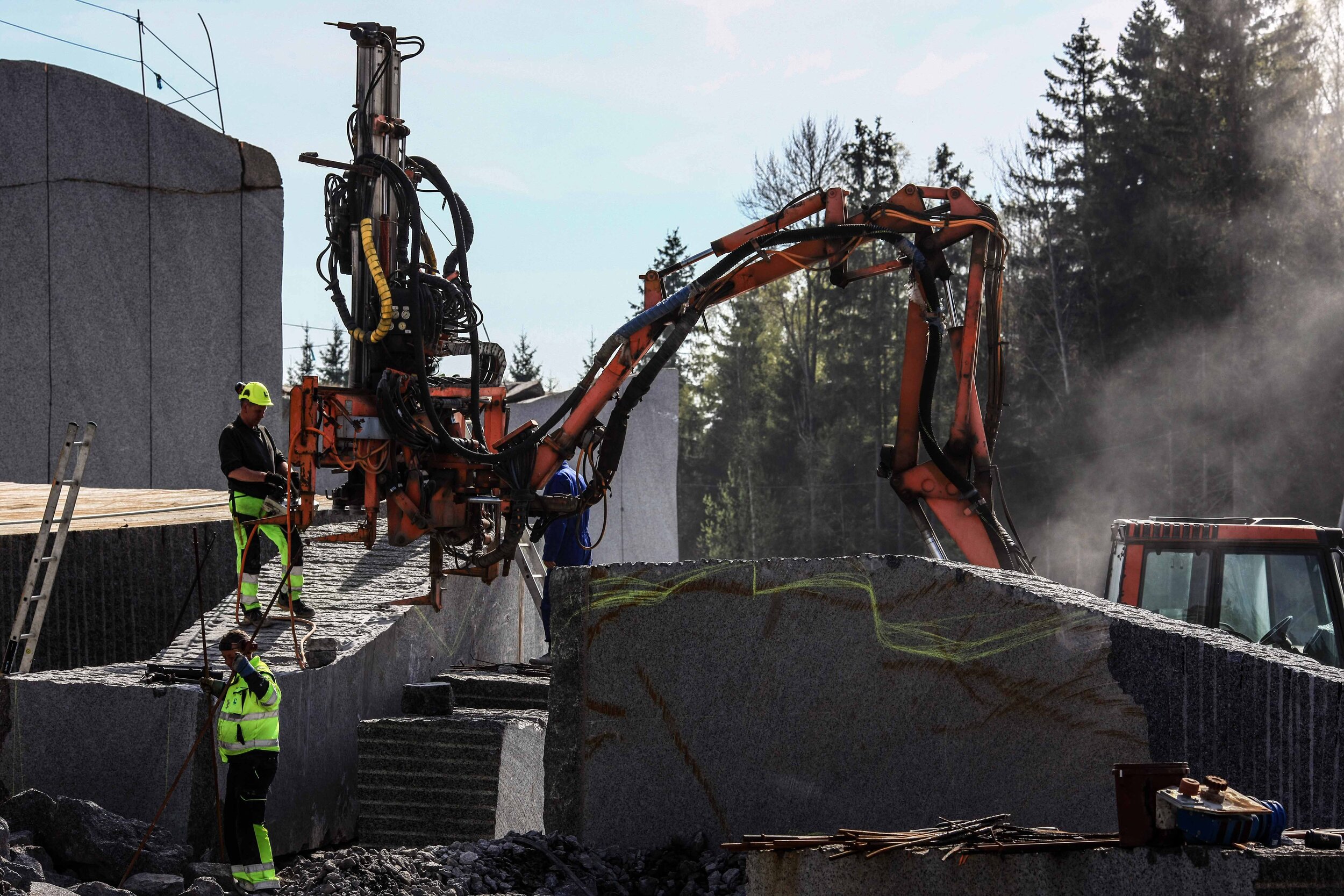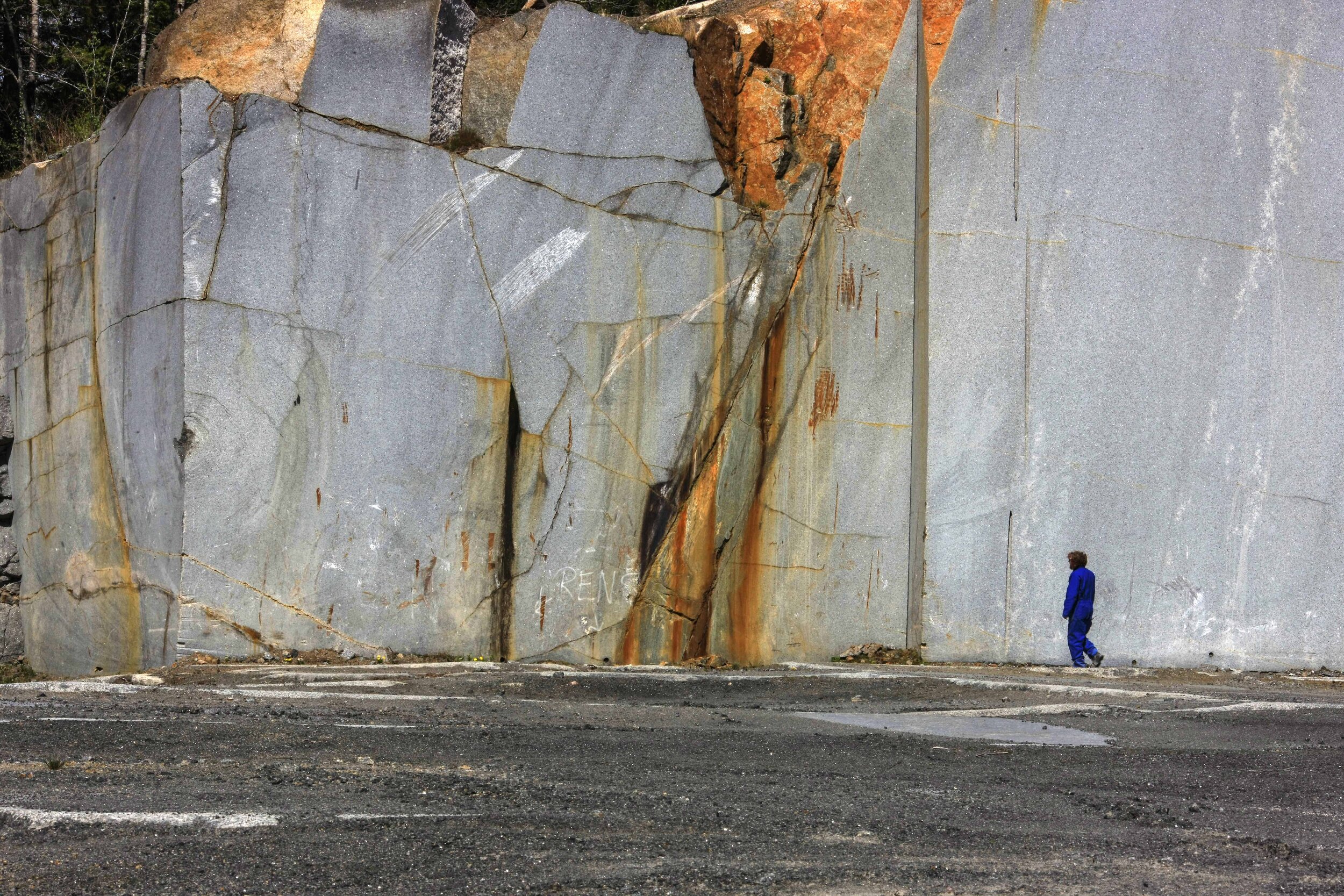About Dodekalitten
In a field on the island of Lolland, overlooking Småland waters, a monument that combines sculpture and music in a landscape full of history creates a unique experience.
The Dodecalith (Greek: Twelve stone) consists of 12 stone columns, each 7-9 meters high and each weighing 25-45 tons, where the upper 2 meters are carved like heads, all facing the center of a circle 40 meters in diameter.
Under a circle of sitting stones, a 12-channel sound system is installed, allowing spatial electronic music to play inside the circle daily from sunrise to sunset all year round.
THE ARTISTS ABOUT THE DODEKALITTEN
The 12 stone figures are made by
sculptor Thomas Kadziola:
"Figures up to 9 meters would seem grotesque if they were given clear facial expressions such as a smile. At the same time, they need to have an intimate expression of not appearing fascistoid. The bigger the head becomes, the less the effect and vice versa. For me, the expression, personality lies in abstraction. It is incredible that a character can be described through abstraction.
In order to maintain concentration and impact throughout the years of work, it is necessary to have a personal relationship with what I do. In this way, the work will reflect where I was in life when the figure was created. Something private becomes personal and therefore universal. When all 12 figures are finished, they will hopefully mirror lived lives others will recognize themselves in. My hope is that the finished Dodekalith will stand as a kind of zodiak of life. The twelve insights of life."
Visitors' Comments:
"The idea of music in DODEKALITTEN came about as an idea. I did not have a concrete idea of what the music should sound like, but it should be an extra dimension in the work, an equal part.
When I heard Wayne's music for the first time, DODEKALITTEN again. It had a new character. The music is not just made in the spirit of the place and the work. It makes it all vibrate, to tell new chapters of the same story.
With ten stones, DODEKALITTEN to an open-air temple. With the music, it got a transparent roof. If you stand in the middle, you can hear everything people whisper about."
Listen to an excerpt of the music accompanied by images from Dodekalitten
THE SOUND INSTALLATION ”SOLKREDS” IS COMPOSED BY WAYNE SIEGEL:
"SOLKREDS is a permanent sound installation created for DODEKALITTEN. It is a system rather than a piece of music in the traditional sense. SOLKREDS is continuously created by a computer program and forms gradually changing sound backdrops to the sculptures. The mood can be anything from calm to harsh. The sound is played through loudspeakers placed under 12 side stones: one next to each position in the stone circle. The work is alternately audible and silent. The durations between pauses are unpredictable and shifting. SOLKREDS begins playing each day at sunrise and stops at sunset. The computer system uses data about the position of the sun in the sky, the phase of the moon and the tides to control the musical processes.
SOLKREDS consists of three musical elements: drones, bells and sun songs. The drones consist of 24 electronic voices, two in each speaker. The drones are alternately audible and silent. The 24 voices each have their own course, but also relate to each other and form changing harmonies. There are 52 different harmonies, which develop slowly over time without repetition. The bells appear relatively rarely and only when the drone sounds are active. They form a counterpart to the elongated drone sounds. The musical structures of the bells are created on the basis of the harmonies played by the drone sounds at any given time. The bells appear more frequently at high tide than at low tide.
Every day at noon the drones and bells are silent and a sun song is played. It's a regular daily concert that starts when the sun is highest in the sky, calculated from the geographical coordinates of the DODEKALITTEN. The time - called astronomical noon - varies from day to day, but is always between 11.58 and 12.30 in winter time and an hour later in summer time. There are 30 sun songs - one for each day of the lunar cycle. The sun songs that are close to each other in the lunar cycle have a close musical relationship, while the sun songs that are far apart are different. The sun songs are through-composed and last 3-5 minutes each. They form a contrast to the other elements of SOLKREDS, which are governed by chance. Each sun song consists of 12 voices performing solo. The 12 sculptures in the stone circle enter into dialogue with each other with individual polyphonic passages in which all 12 sing simultaneously."
THE BEGINNING - HOW IT ALL STARTED
In 2006 Thomas Kadziola participated in LandArt Lolland Falster with the work Anemarken in a field near Søllestedgaard. The work consisted of three steles with carved heads. The sculptures were placed in a grain circle 14 meters in diameter. The two highest were about 2.5 meters. The smallest, partly reclining, was about 1.6 meters.
In connection with this exhibition, Thomas Kadziola was contacted by composer Gunner Møller Pedersen: Had Thomas noticed the unique energy in the center of the work? Yes, Thomas had, without being able to explain how it had arisen. Gunner now sowed an idea in Thomas: To make a larger work with higher steles that might generate a correspondingly stronger energy. Using reverse calculation Thomas arrived at twelve stones at 6 meters in height. It would take years and require a collaborator. Now that Gunner imagined Thomas was working on the stones for years, then Gunners' job had to be creating the music. Thomas formulated Gunners' task as a work for 12 channels that would work equally well no matter where one stood in relation to them.
The idea of Dodekalitten was born, and the long and laborious realization of the project began
Photographic depiction
Photographer Bibi Nissen documents the creation process
"Overall, I portray DODEKALITTEN in all processes from the time the stones are extracted until they are finished in the stone circle, and DODEKALITTEN itself in all the situations that arise around it and the artists Thomas Kadziola and Wayne Siegel.
My goal is not only to document, but to get so close that you sense the people invlolved and the energy of the project. When you are in DODEKALITTEN, you as a visitor play into the experience in the same way as the weather and the light, as if they are part of the work and the narrative. I see the everything about DODEKALITTEN as one work that deserves, almost cries out, to be told in pictures.
When I shoot, it's not just reflections on framing and angles that come into play. Although the work is large, monumental, it is also very intimate. Everyone who works on it, from the artists to the crane crew, is personally engaged. It creates images with intensity and intimacy. The fact that everything about DODEKALITTEN is incredibly photogenic and sometimes very dramatic is an additional gift. The narrative around DODEKALITTEN is so diverse and amazing and this is what drives me as a photographer. It's not just functionality and the process of storytelling. Joy, pain, sadness, anger, frustration and everyday banalities speak. Although it is world history that is being written, it is also a story about people."
PHOTOS OF BIBI NISSEN
Click the arrows and see selected pictures
Nature & history
The entire area around Dodekalitten was landscaped twice in 1968 and 1974. Thus, there will be no change in the beautiful landscape around Dodekalitten. The area is not only beautiful, it is filled with history:
One of Denmark's best preserved passage graves and an Iron Age trail
Glentehøj is located about 300 meters west of Dodekalitten and was built around 3200 BC.
The passage grave is 5 meters high and 30 meters wide. The mound was excavated in 1842 and you can enter it.
The Glentehøj trail leading to Glentehøj from the town of Kragenæs passes by Dodekalitten.
The path, said to have emerged in the Iron Age (from 500 BC to 500 AD), was laid back in its original track,
when the Foundation Dodekalitten took over the land register where Elevenhøjgaard's main building was located.
There are also three preserved Bronze Age mounds left of the 11 mounds originally found close to the farm.
Ellehammer's first flight
Ellehammer was the first in Europe to raise as much as 50 cm from the ground with an airplane.
It happened at Lindholm on 12 September 1906. Lindholm can be seen to the southeast of Dodekalitten.


